Cycads, Gateways, the Campanile, and Big Money
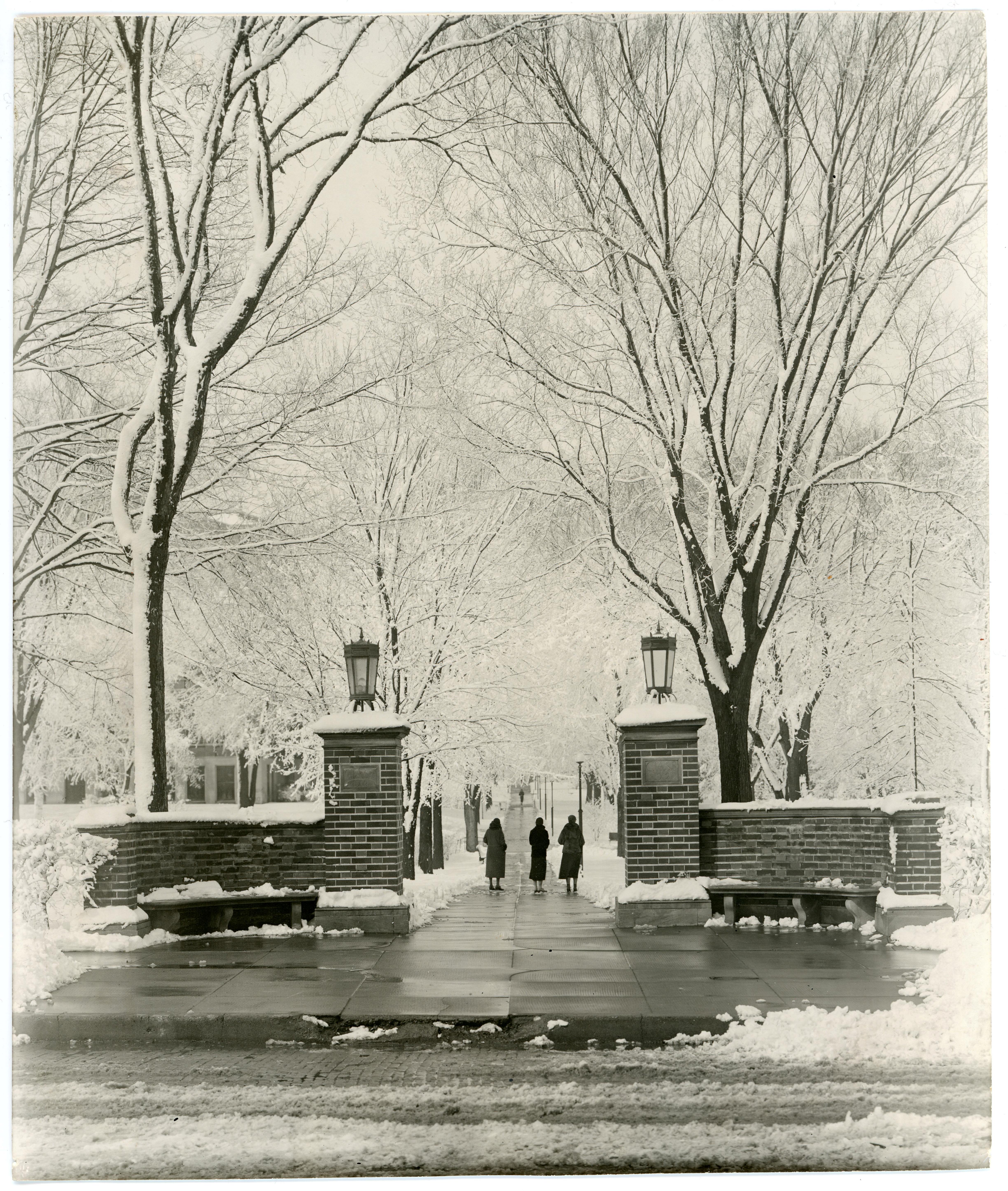
Introduction
College students often develop a special affection for certain professors, facilities, features, or groups on their campus. As graduation approaches, students try to think of ways in which they can show their appreciation to their school and also leave a reminder of their class on the campus. In the early days of the University of Northern Iowa, class gifts were solely student-run enterprises, typically organized by a few senior class leaders. They would decide upon a gift and then attempt to extract a dollar or two from each of their classmates to pay for the gift. However, in the last fifty years or so, class gifts have become enterprises associated with the well-organized, professional assistance of development and advancement staff, who help to construct a list of appropriate gifts and then organize and assist with the necessary fund-raising.
This essay will focus on the gifts that classes have made to the University of Northern Iowa over the years. It will concentrate on gifts delivered at the time of or fairly soon after graduation rather than on gifts donated by classes long after they graduated, perhaps at a golden anniversary reunion. For some class gifts there is good documentation of the amount of money raised, the nature of the gift, and the current whereabouts of the gift. For other class gifts, there is little or no existing documentation.
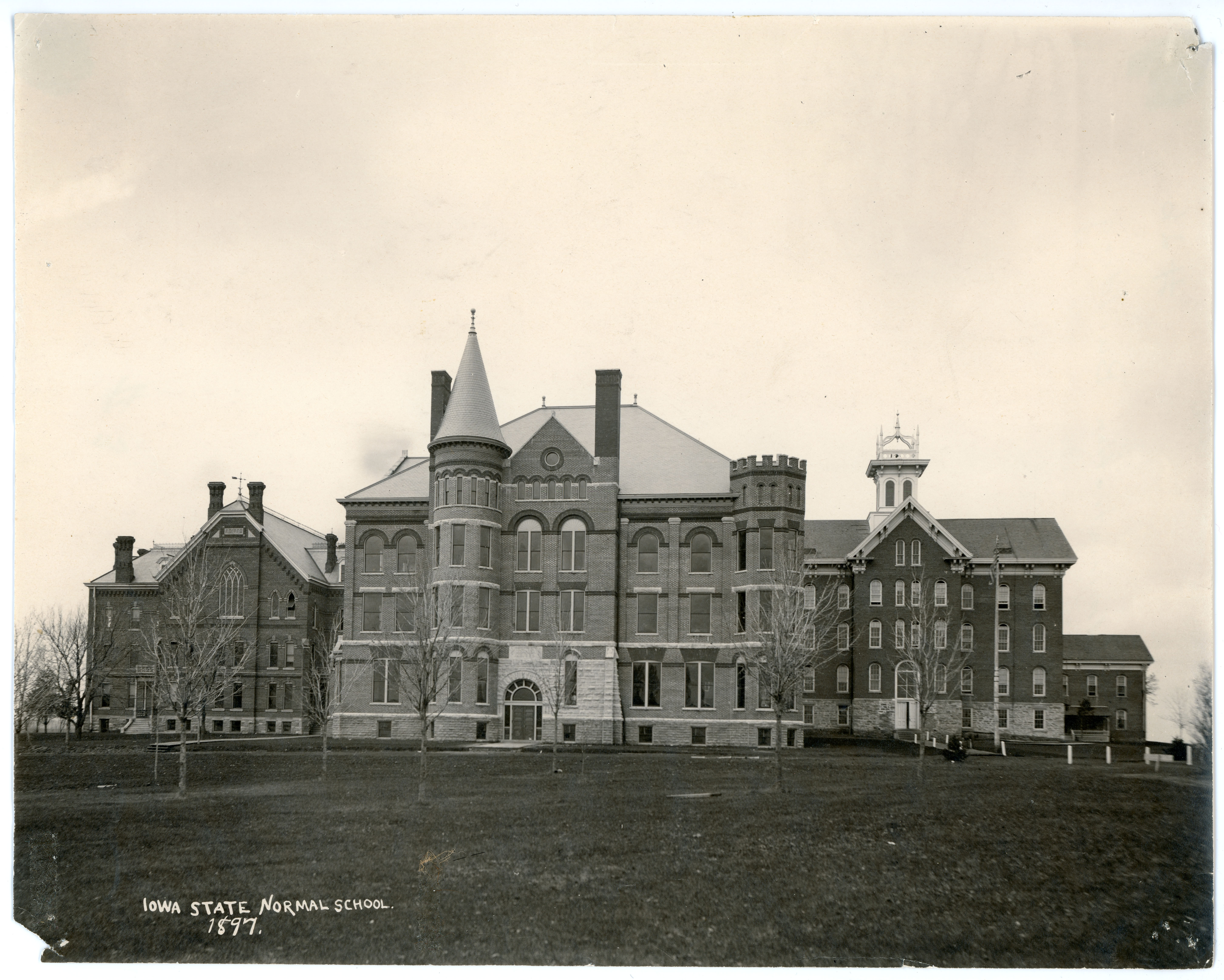
Beginnings
Professionally organized class gift efforts were not the norm in the past. Over a century ago, students at the Iowa State Normal School, now the University of Northern Iowa, took care of the process on their own. In the earliest days of the school, students' affection for their alma mater seemed to be particularly strong for a number of reasons.
- The school had a simple, unified mission: the preparation of teachers for Iowa schools. All students studied a common teacher education curriculum taught by a small faculty.
- The school itself was small: in 1890, for example, the enrollment was just 529 students. Everybody knew just about everybody else.
- There were few distractions. The campus was relatively isolated. Transportation and communication were limited. Students tended to stay close to campus for both their studies and their recreational activities.
- The late Victorian era could be characterized as being sentimental.
However, a small enrollment and limited funds restricted what students could do for their school in those early days. The earliest gifts were probably small tokens of appreciation, such as a fine fountain pen for the penmanship professor, or a nice volume of Shakespeare for the literature professor. The Class of 1881 was responsible for what was likely the first significant class gift. According to Eliza Rawstern Wright, the Class of 1881 secured a large granite boulder and had the year "1881" deeply inscribed on it. It was dedicated at the time of the dedication of Old Gilchrist Hall, on July 8, 1883, and then placed on the lawn in front of what is now Lang Hall. The stone was still there in 1933, but its current location is unknown.
Evidence for another fairly early formal class gift appears in the student newspaper, the Normal Eyte, in 1895. In May of that year the newspaper announced that the various sections of the Class of 1895 were having difficulty in deciding upon a gift. At that time in the school's history, degrees were different from those awarded today. In those days students might have been completing a short-term diploma course, a two year course, a three year course, or even a four year course of study. All students who were finishing their course of study in 1895, no matter how long or short, would have been considered members of the Class of 1895. The Normal Eyte reported that there was considerable friction among the class sections. Apparently each section had its own idea of an appropriate gift and was unwilling to compromise. The difficulties of this class, as described in the newspaper, would be echoed many times in later years when classes attempted to come to a gift decision:
It is difficult to come to a satisfactory decision on any subject at a large meeting. The majority of the students do not have time to sit down and consider just what they desire in regard to the many matters that come up during the last term of the senior year. It is, therefore, necessary to have some who have made a decision, to make plans. There are always a few who object to everything and yet have nothing to present.
In any event, by the time of Commencement in June, the sections had come to agreement. On June 19, 1895, during Class Day exercises, the seniors presented "two beautiful etchings" intended to be hung in the school's new library that would be housed in the Administration Building to be completed in 1896. Unfortunately, there is no evidence of what was depicted in those etchings, which had apparently been purchased by an assessment of the graduating classes.
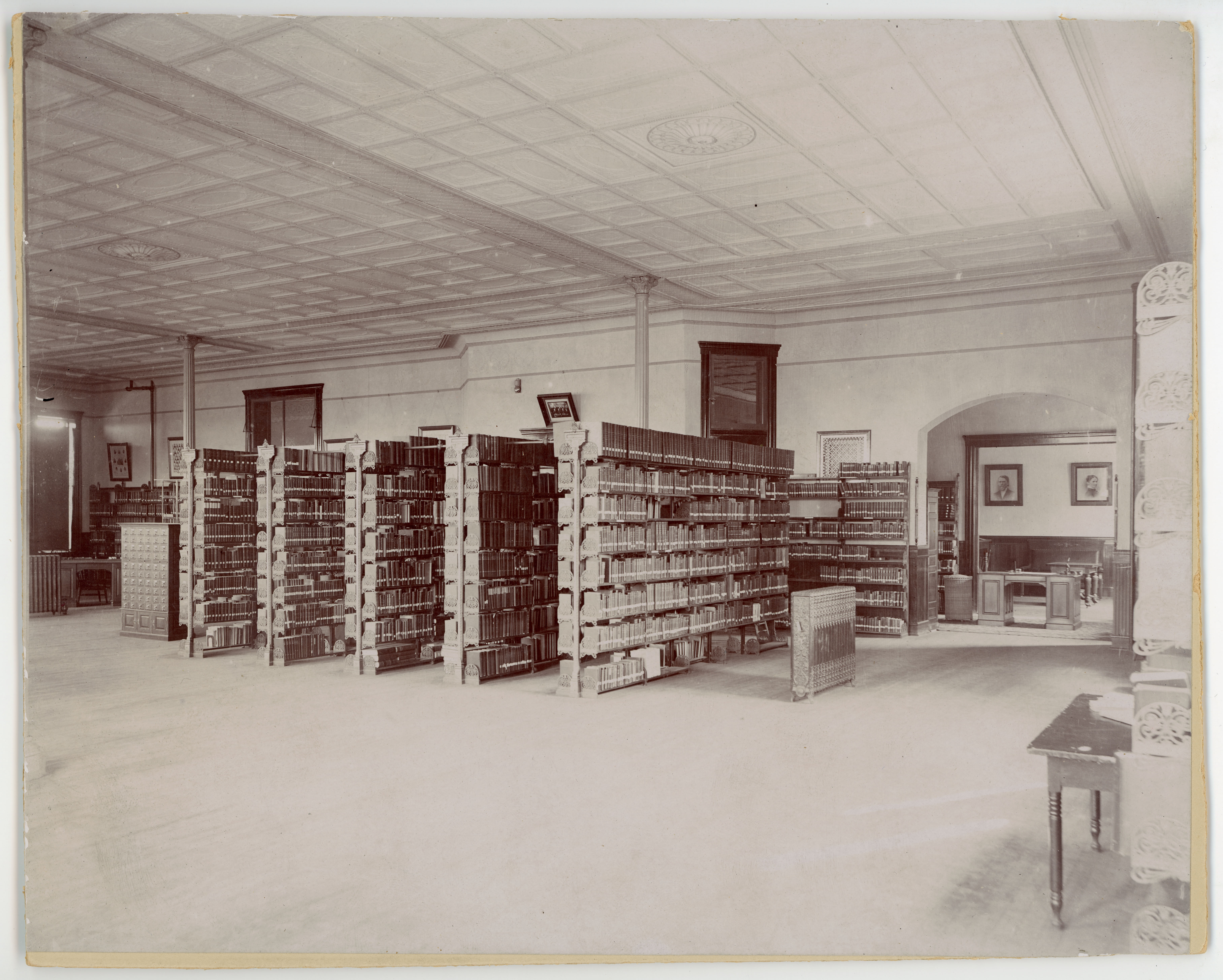
In May 1897, committees from the sections of the Class of 1897 met to consider a class gift, but, due to limited finances, decided not to make a gift. The Normal Eyte reported that the class wished to present "the best and most creditable gift that moderate means would allow." However, the class believed that it could not ask its members for additional funds at that time. They did not have any money to spare, and, as teachers, the prospects for substantial disposable income in the near future were not bright.
The Class of 1898 did make a nice gift. And they started the process earlier in the school year than their predecessors had done. Already in February 1898 the newspaper reported that the fourth year class was raising money to purchase a cycad fossil that had been found in South Dakota by Professor Thomas Houston MacBride, the renowned botanist on the faculty of the University of Iowa. Cycads are large plants similar in appearance to ferns and palms. They have a long fossil record. Yet many species survive in tropical climates to this day. The MacBride fossil would be placed in the Normal School's new and growing museum. It seems likely that the class gift decision was influenced by a very active student group, the Natural History Association, under the direction of Professor Melvin Arey of the school's Natural Science faculty. Professor Arey did a great deal to start and organize the school's museum and, after his retirement from teaching, served as the curator of the collection from 1917 through 1928. By April 1898 the class had raised enough money to buy the fossil. It was expected to be delivered to campus yet that spring. Exactly when it arrived is unclear, but by October the Natural History Association expressed its gratitude to the contributors who had made its purchase possible. That fossil cycad remains on display in the University Museum today, over 110 years later.
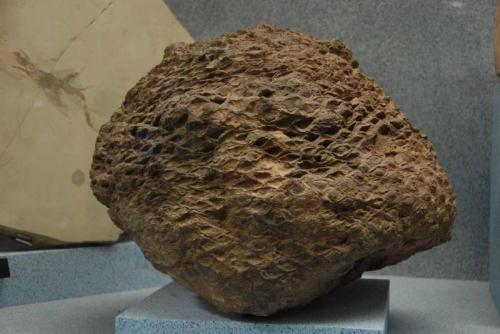
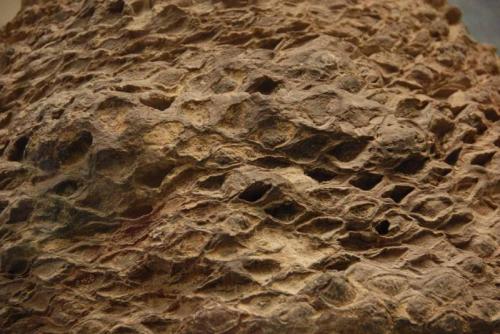
The idea of class gifts seems to have fallen away for a few years following the gift of the fossil. Perhaps small groups of seniors made more localized contributions for the benefit of particular organizations within the school during that period. In 1901, for example, the seniors of the Shakespearean Literary Society purchased two wicker chairs for the use of the society itself.
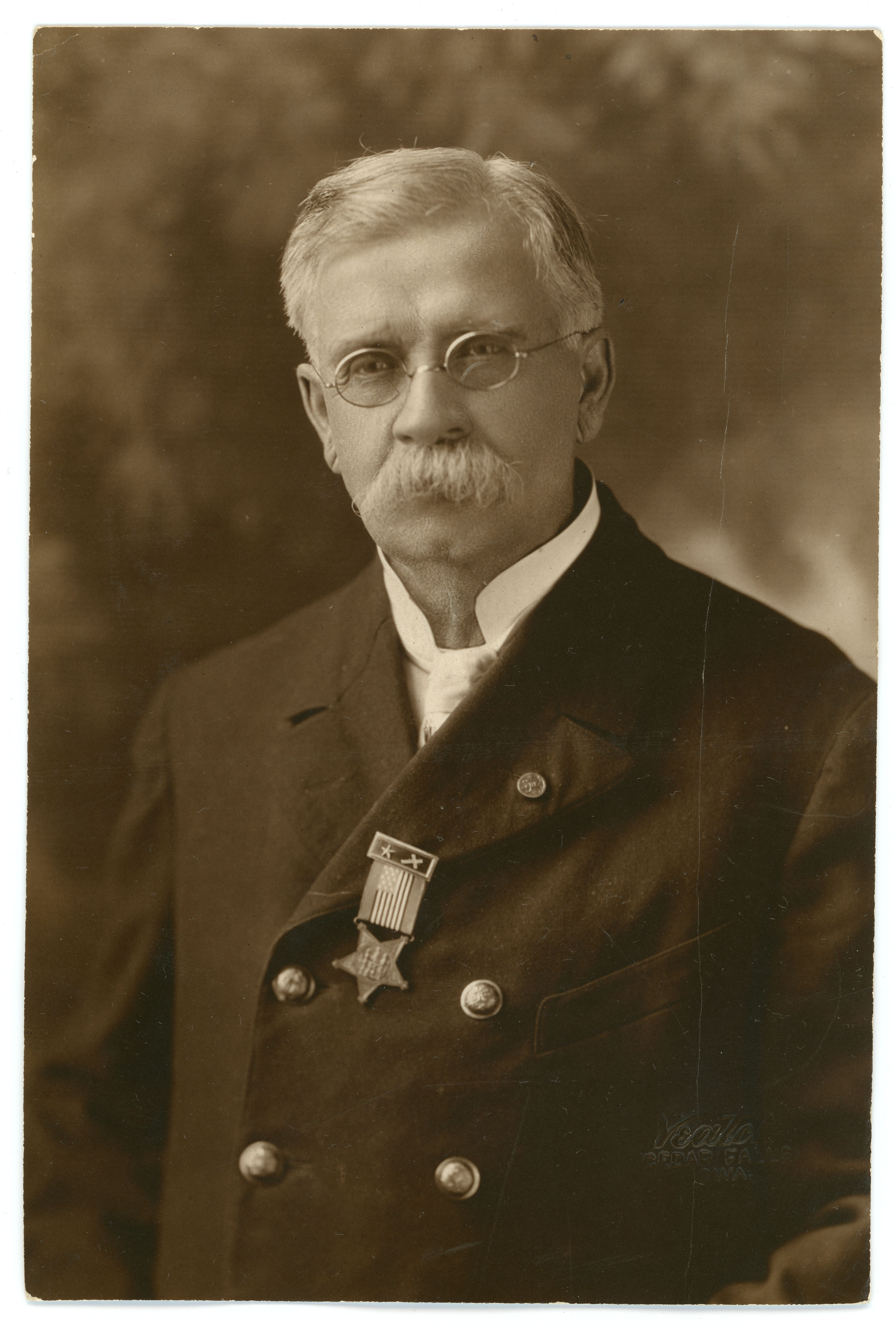
The Class of 1909, however, raised the bar once again. The year 1909 was the centennial of the birth of Abraham Lincoln. The love and gratitude that Iowans felt for Lincoln and his Civil War leadership in those days would be difficult to overestimate. Many of the students were the children or grandchildren of Civil War veterans. At least five members of the Normal School faculty and staff were Civil War veterans and active members of the Grand Army of the Republic. To commemorate the Lincoln birth centennial, the Class of 1909 presented a bronze tablet on which was inscribed the Gettysburg Address.
The seniors presented the tablet to the school in an elaborate ceremony. On Friday, February 12, 1909, the students and faculty assembled in the Auditorium of what is now called Lang Hall. Members of the Grand Army of the Republic and the Women's Relief Corp from the community joined them there. Professors Melvin F. Arey and William Wesley Gist, both Civil War veterans, spoke at the ceremony as did Albert T. Barrett and Charles F. Schweiker, of the senior class.
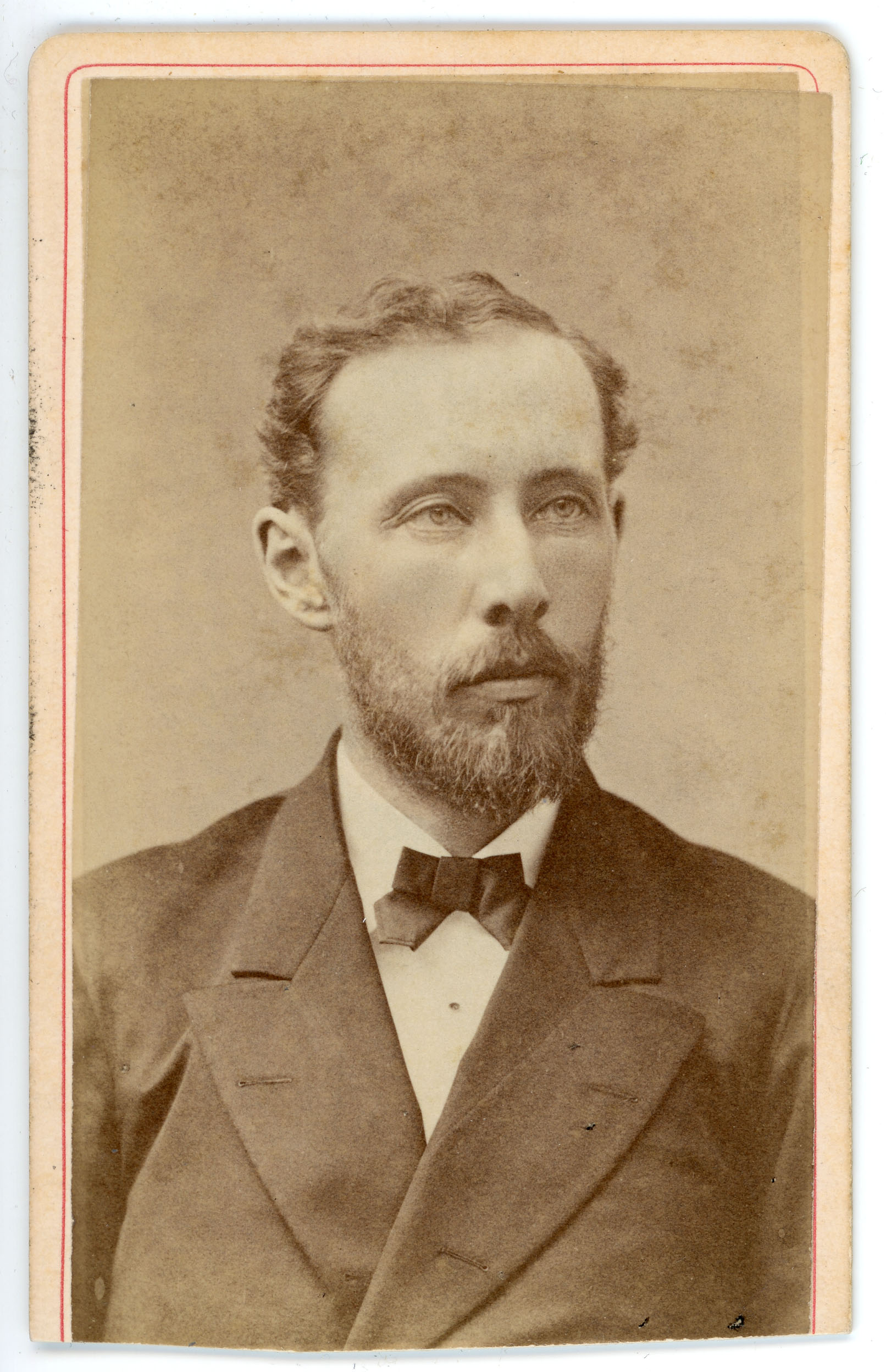
The yearbook of the school, the Old Gold, lauded the gift "as a fitting token of their love for their Alma Mater" and hoped that those who saw the plaque would think "of the great principles the tablet is intended to convey." The seniors asked that the tablet be mounted in the new Library, now Seerley Hall, when construction of that building was completed.
The Class of 1911 brought the focus of their gift a bit closer to home. On Monday, March 21, 1910, Professor Leonard W. Parish was killed in a railroad accident near Gladbrook, Iowa. He had been returning to Cedar Falls after visiting his son John in Iowa City. The train in which he had been riding derailed. His car and another car telescoped into a heavier Pullman car. At least forty-six people were killed and forty-five were injured in the accident. Professor Parish was a very popular member of the economics faculty at the school.
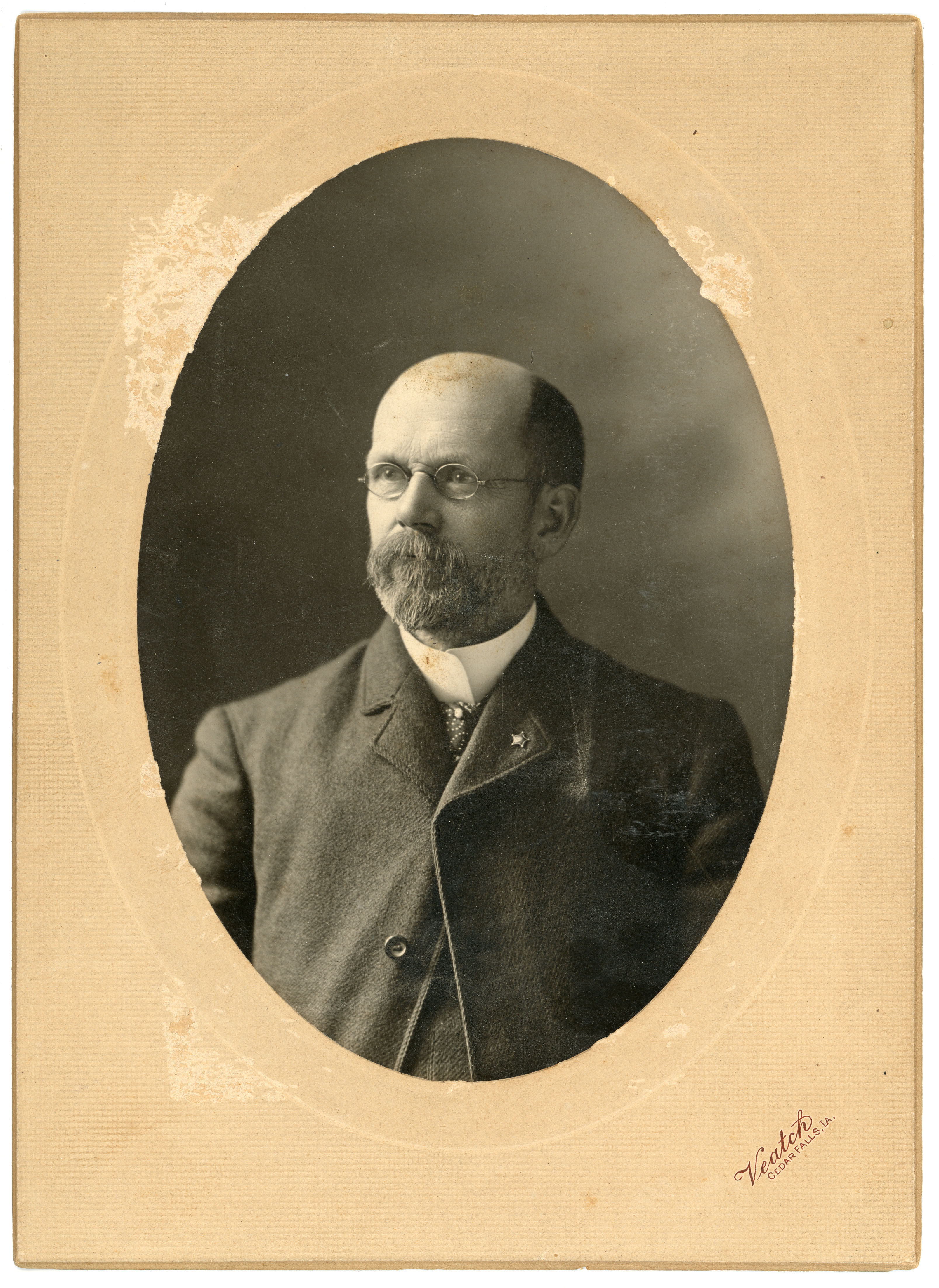
He was also active in professional educational matters around the state. He had written several books and was an active citizen of the developing College Hill neighborhood. His death saddened both faculty and students. Consequently, the Class of 1911 commissioned a watercolor portrait of Professor Parish. The portrait was made under the direction of Teachers College alumnus and local photographer W. L. Veatch. Anton Fisher, on behalf of his class, presented the portrait during chapel exercises on October 30, 1911. The portrait would be hung in the historical gallery of the museum.
Not until May 1912 did the Class of 1912 decide that their gift would be an outdoor fountain. That would have been a nice gift, but their late start hindered their efforts to raise enough money. The student newspaper, the College Eye, first cited the generosity of the senior classes at Morningside College and Cornell College and then printed a scathing criticism of Teachers College students who would not contribute to their class gift. The editorial said, in part:
O, you tight-fisted, squeezing, grasping, wrenching, dead and dying lifeless Seniors without a grain of school spirit in your veins, with no thankfulness for the work of earnest professors and for the beautiful associations and glorious friendships of student days . . . .
It went on to try to shame the non-contributors into participating in the effort. Some money had been raised, but the class needed about one dollar more per student to get the fountain project done. Unfortunately, the editorial scolding was to no avail. At least at that point, the gift from the Class of 1912 was dead. But the Class of 1912 would eventually be included in one of the most memorable cycles of class gifts in the school's history. The Class of 1912 passed its funds, insufficient for its own project, on to the Class of 1913.
The Gateways
The school year of 1912-1913 was especially challenging for the Iowa State Teachers College. In the name of efficiency and in order to reduce perceived duplicative curricula, the Board of Education, predecessors of the Board of Regents, put forward recommendations for the three Iowa public institutions of higher learning. The Board recommended that:
- all engineering study be moved to Iowa State University;
- all home economics study be moved to the University of Iowa;
- all education courses above the sophomore level be moved to the University of Iowa.
The last recommendation would have reduced the Iowa State Teachers College to the status of a two-year school similar to a junior college. That would have been a significant step backwards for a school that had just acquired college status, at least in name, from the General Assembly in 1909. Alumni, administrators, faculty, and students at all three institutions were outraged. They flooded the General Assembly with protests. Bills rescinding the recommendations were introduced and passed in both houses. The whole matter even received a name: the Coordination Controversy. The legislative session closed before the various bills could be reconciled, so the bills did not go forward to the Governor for his signature. But the intent of the legislation and the will of the legislators were clear. The Board of Education withdrew its recommendations. Partisans of all three schools rejoiced. Supporters of the Teachers College were probably the most happy, because the resolution of the issue had been in grave doubt for months, and the Teachers College had had the most to lose. With the knowledge that the Teachers College would continue to be a four year institution, students and faculty were in a mood to celebrate.
One of the big celebrations was May Day. That old holiday had been celebrated in earlier years, but those celebrations were limited to activities such as a maypole for children at the Training School or a performance by dance classes. However, the May Day celebration in 1913 included a parade through Cedar Falls, a picnic lunch, the coronation of a May Queen, a large maypole dance, a tennis tournament, a baseball game, and a concert by the Cedar Falls Municipal Band. The whole city was invited to attend the program, which was described as the beginning of a new epoch in school history.
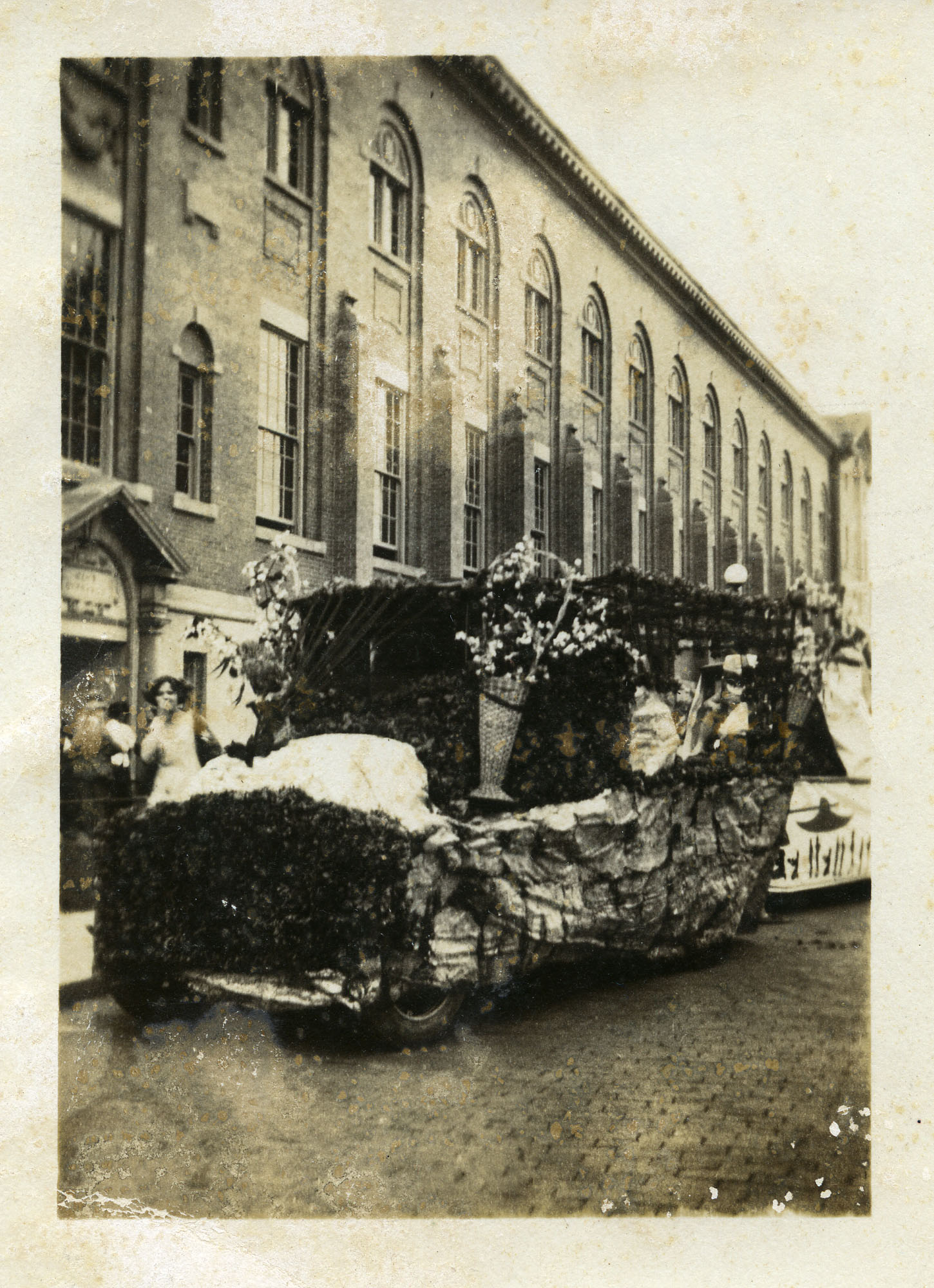

The big celebration, organized by the Class of 1913, went well. But that class was also busy on another front. In April 1913, the College Eye announced that the Classes of 1912 and 1913 would combine their funds to erect a gateway at one of the entrances to campus. One of the gateway columns would be inscribed to the Class of 1912; the other would be inscribed to the Class of 1913. That gateway would be "a fitting monument to leave to the memory of a year of worry, trials, and successful conquests such as we have just passed thru."
Contributions poured in quickly. By mid-May 1913, even without a special student-by-student assessment, the class raised enough money to build TWO gateways: one at the corner of 23rd and College Streets and another at 24th (now Seerley Boulevard) and College Streets. Construction followed so quickly that a dedication of the gateway at 23rd and College could be held on June 7, 1913, just six weeks after the idea surfaced in the student newspaper. The dedication program included a short parade, speeches, and music.
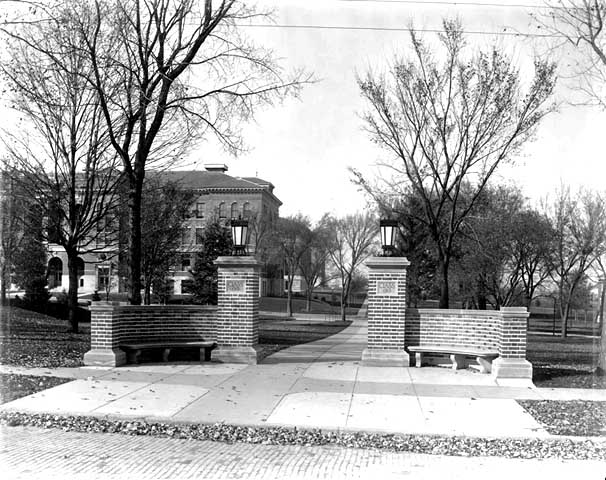
Citation: "Seerley Blvd and College St. Entrance," undated, in the University of Northern Iowa Photograph Collections #29, box: CAM 4-6 folder CAM-4, University Archives, Rod Library, University of Northern Iowa.
In one part of the ceremony, representatives of the Class of 1912 presented symbolic keys to representatives of the Class of 1913. Then those representatives presented both their set of keys and the keys of the Class of 1912 to the Class of 1914, as their successors at the Teachers College. Student speakers reminded their hearers of the difficult year through which they had just passed and urged each other to be loyal, honest, faithful, and true, both then and into the future.
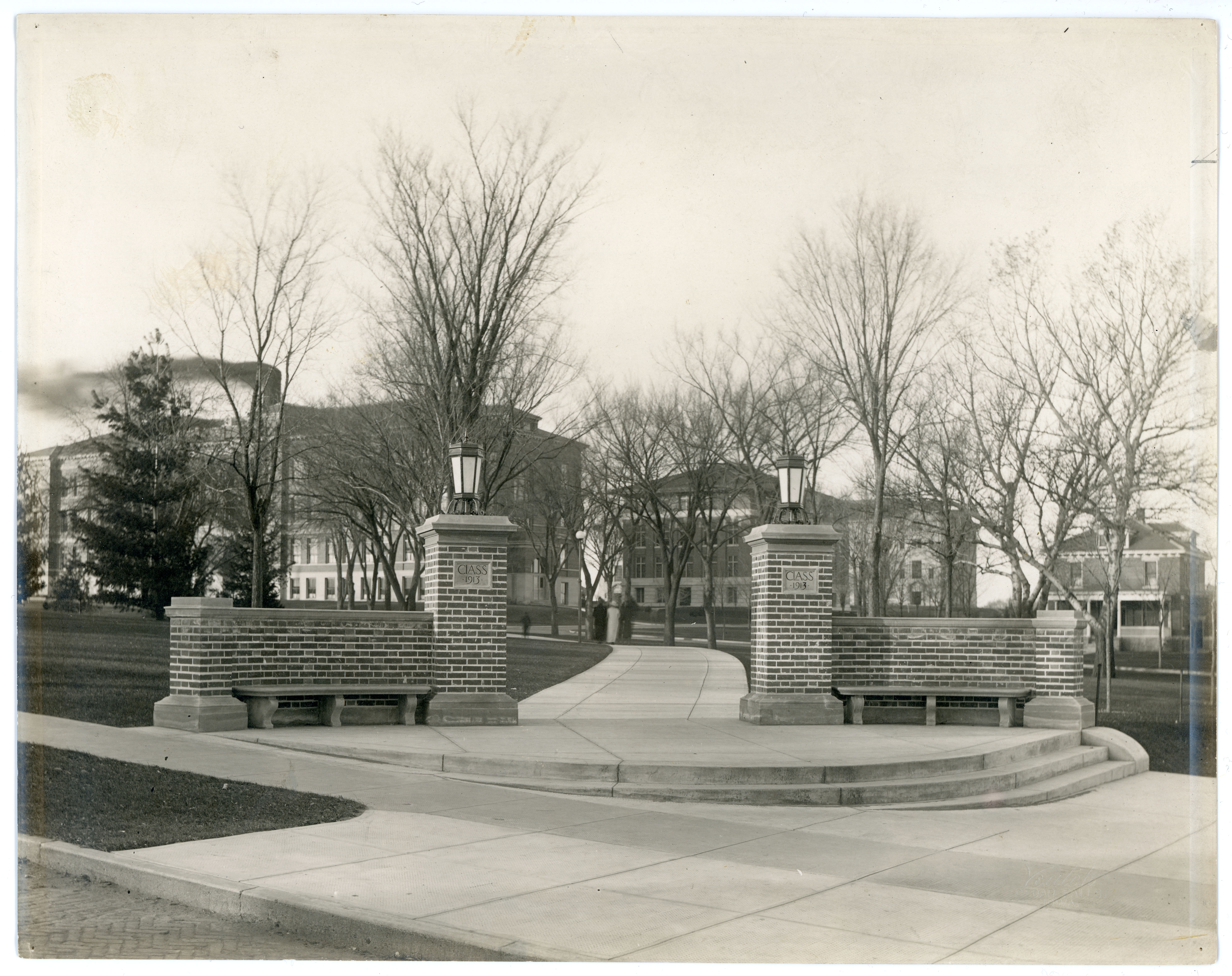
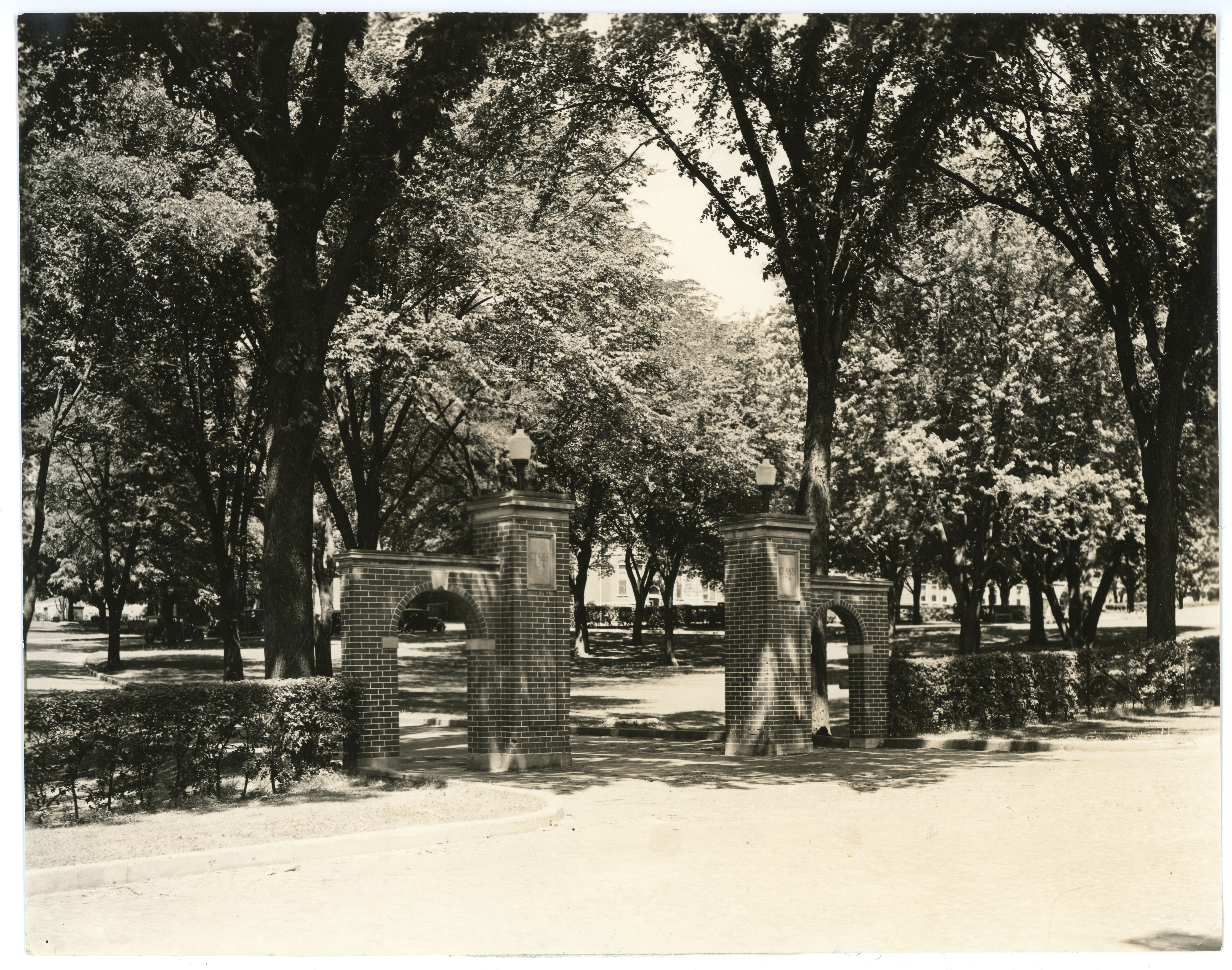
The Class of 1914 took the admonition seriously. Already in January 1914, they decided on a $1 per class member assessment for a class gift. And then on March 26, 1914, the class decided to fund a third gateway, this time at the corner of 26th and College Streets. Apparently the class had already raised sufficient funds to move forward. They sent plans to James E. Robinson, Superintendent of Buildings and Grounds, who promised that the work would be completed by Commencement. Mr. Robinson was as good as his word. The arched gateway was ready for dedication at the Commencement exercises for the Class of 1914 in June. The program included speeches, the class song, and the planting of ivy.
Construction of this third gateway meant that all significant public entrances to campus were nicely decorated. In those days, College Street and the east frontage in general were considered to be the campus "front door". Twenty-Third Street, on the north edge of campus, and Twenty-Seventh Street, on the south edge of campus, were mostly unpaved country roads. Just about all campus photographs were shot from the east and looking toward the broad, impressive east sides of what are now Seerley Hall and Lang Hall. The three gateways were constructed of red brick with limestone trim, which, under James Robinson's guidance, had become the standard building materials on campus. The gateways of the Classes of 1912 and 1913 were quite similar in design, perhaps because they were designed and built almost simultaneously. They featured short brick columns with inset limestone blocks on which were inscribed dedications to the appropriate class. Each also featured limestone benches set against semi-circular brick walls. The gateway from the Class of 1914 was a pair of tall brick arches with limestone trim over the sidewalks on both sides of the 26th Street roadway into campus. Curiously, even though the 1914 gateway was the tallest of the three gateways and had the most graceful style, it seems to have been the subject of many fewer photographs than the other two gateways. At some later date, electric lights were installed on the tops of the columns of all three gateways.
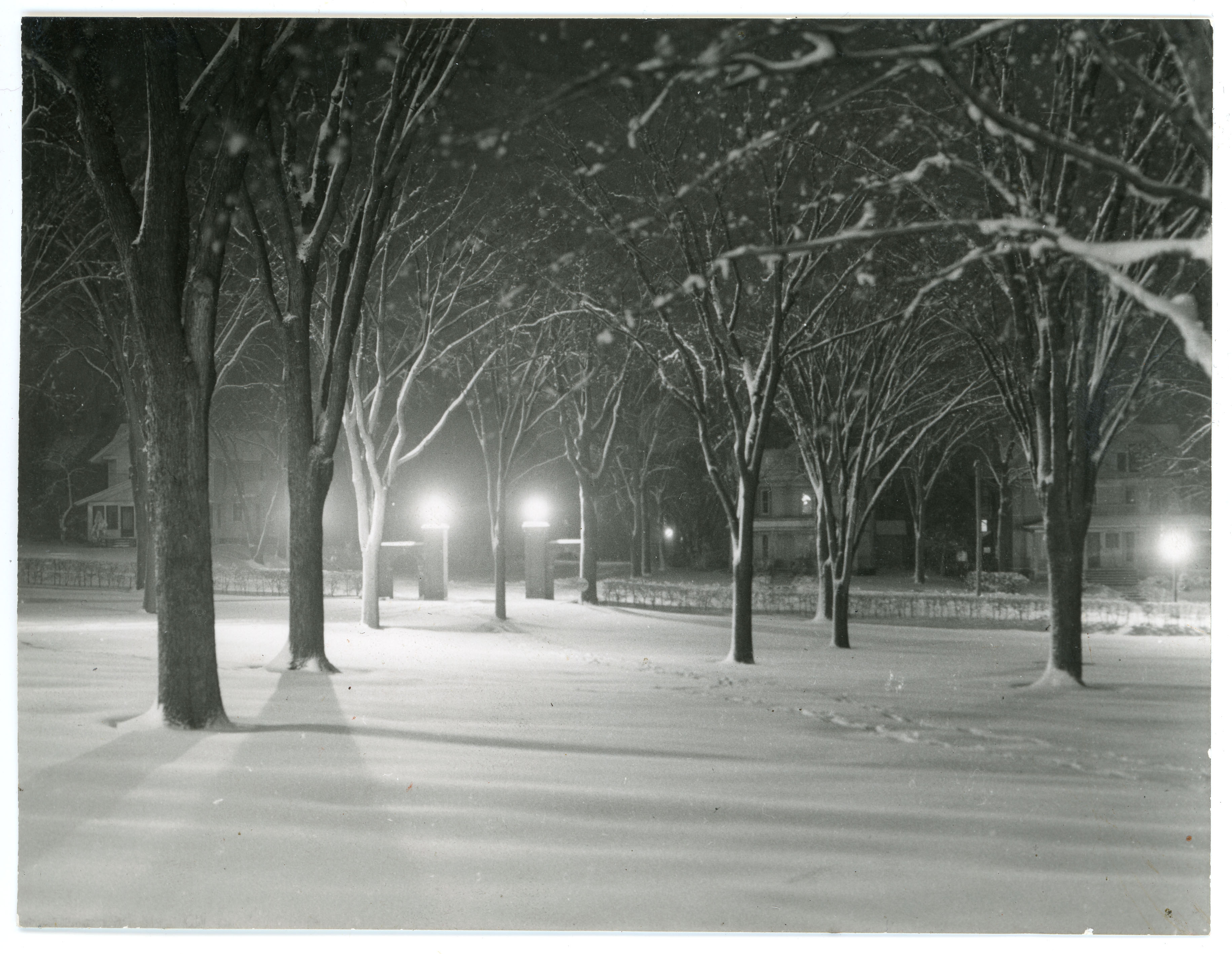
The three campus decorative gateways were familiar landmarks on campus for over sixty years. At least during nice weather, they offered a place to sit, wait, relax, or meet someone.
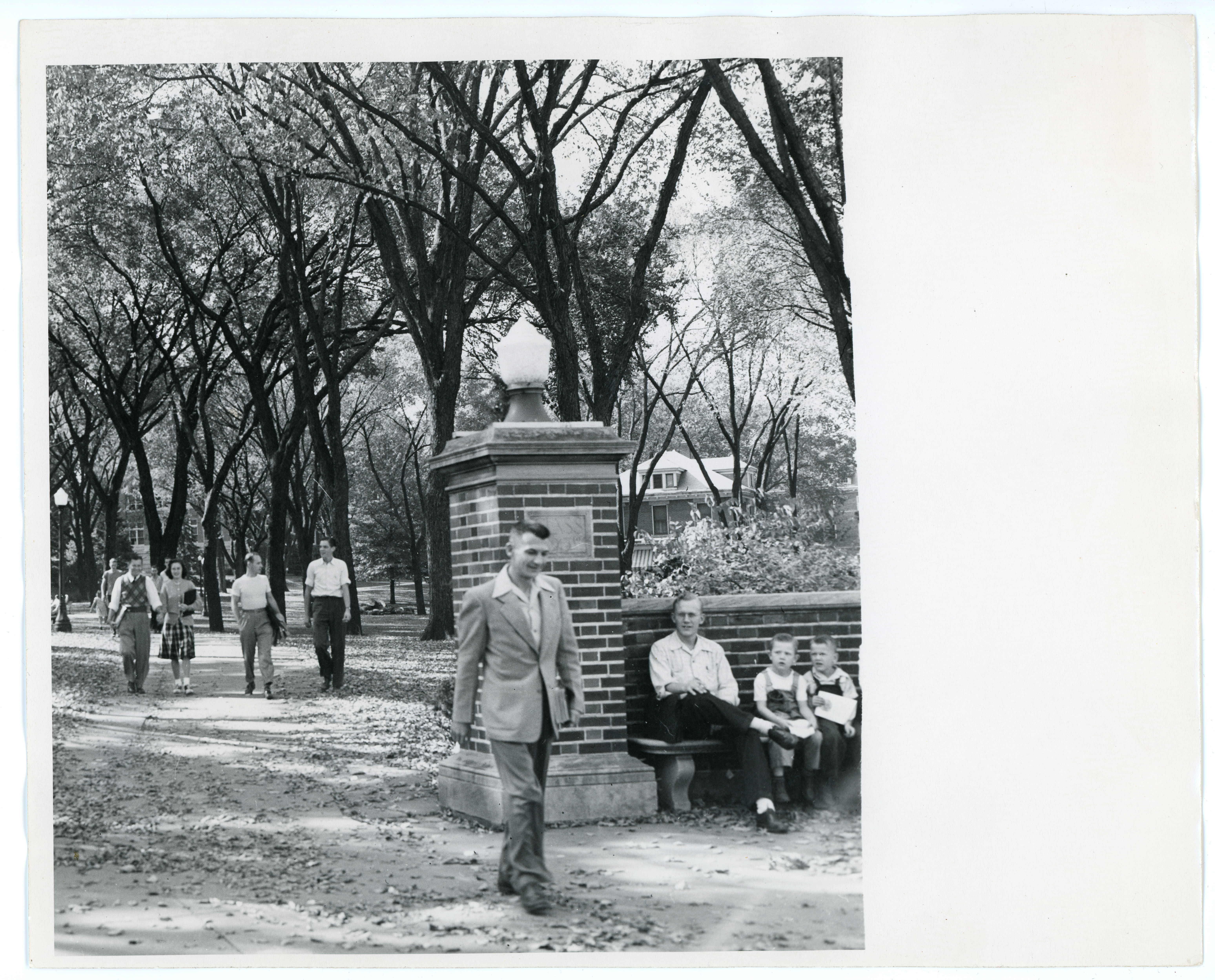
But two of the gateways were eventually demolished and the remaining gateway was substantially reconstructed. The Class of 1914 gateway at the corner of 26th and College Streets was the first to go. During the fall of 1976, the gateway was demolished during the widening of the road leading from College Street up toward Seerley Hall. The widened road would provide easier access to the campus for emergency vehicles. Rebuilding the gateway would have cost at least $9000, which was considered to be too expensive. The significant decorative features were saved, but the bricks were discarded. The next gateway to be demolished was the Class of 1912 gift at the intersection Seerley Boulevard and College Streets. It was razed on November 19, 1980, again in the name of accommodating wider emergency vehicles. Campus Planning administrator Leland Thomson stated that the inscribed limestone block was saved, but that the rest of the badly weathered gateway was discarded.
The Class of 1913 gateway at 23rd and College Streets was apparently showing its age, too. But, for some reason, university administration decided to save it.
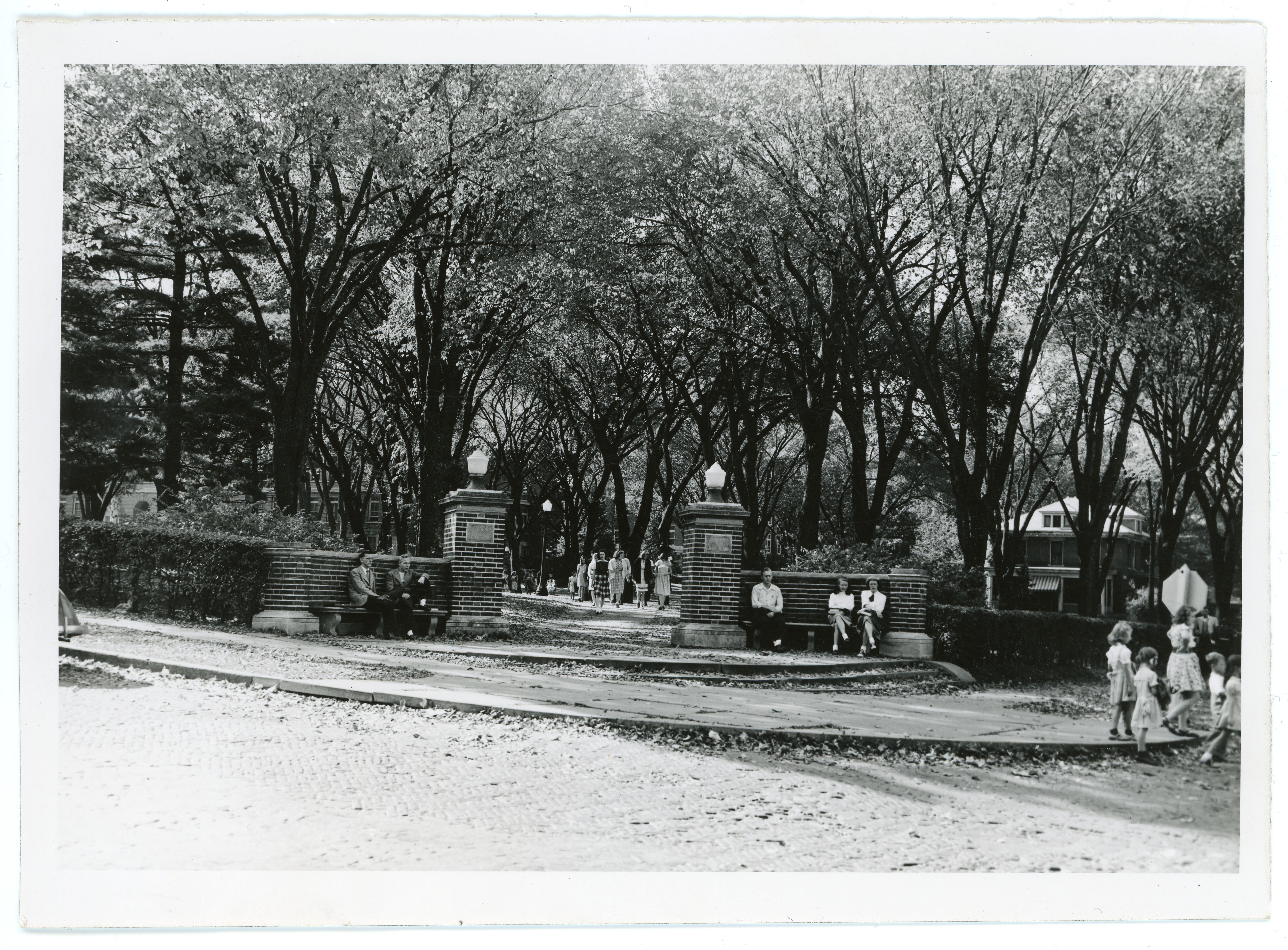
The July 1985 Alumnus magazine stated that the 23rd Street gateway would be torn down, but then rebuilt at just about the same site. The article stated that the project would be partially funded by a 50th reunion gift from the Class of 1935. One class gift would piggyback onto another. By February 1986, campus planners had prepared plans for a significant project on the southwest corner of 23rd and College Streets that would include better designed sidewalks, attractive plantings, a small plaza, and a reconstructed gateway. The overall project would cost about $40,000. There was some sentimental student opposition to the demolition and then reconstruction of the gateway. Some students did not want the old structure disturbed in any substantial way. But the project did go forward. In the summer of 1986, the gateway was torn down, but the inscribed block was carefully removed. The gateway was rebuilt a few feet farther back from the roads in a style quite similar to its original design.
In the summer of 2011, in association with a "streetscaping" plan on College Hill, the 23rd Street gateway was rebuilt yet again. The existing gateway was completely demolished. The construction crew put in a new foundation and then laid new bricks and installed new limestone trim. It also appears as if the masons installed new limestone blocks with the class gift inscriptions.
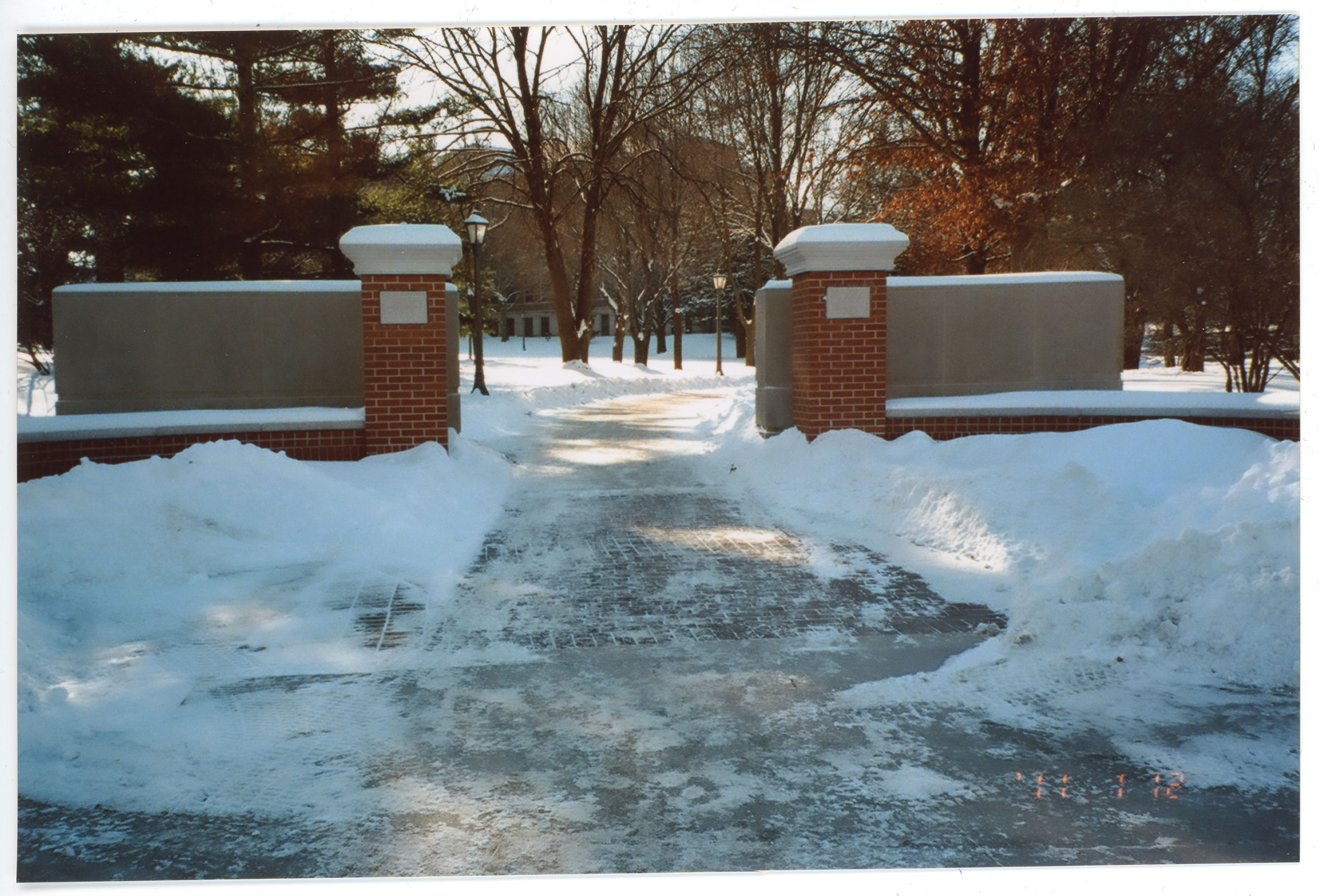
The Campanile
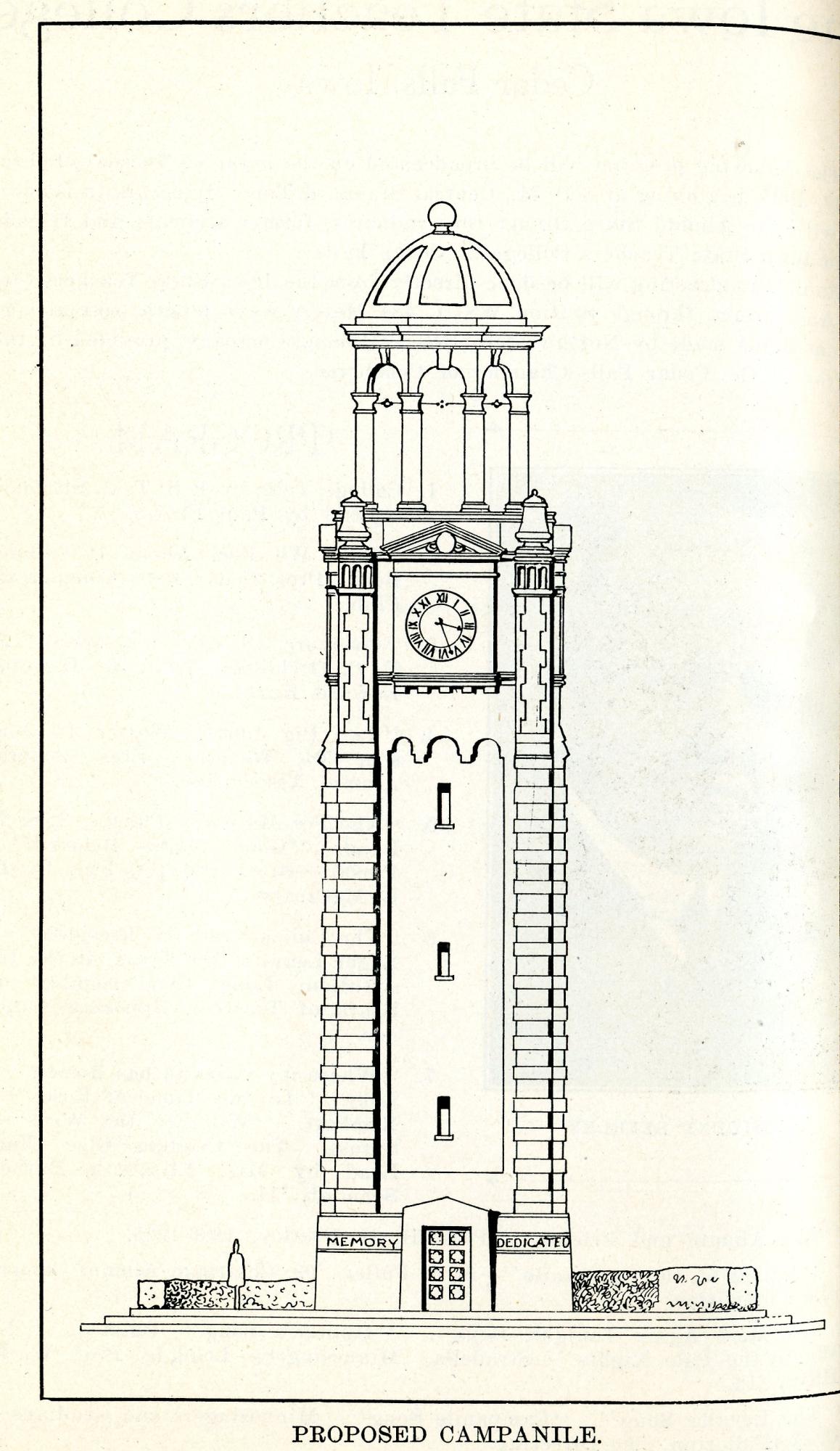
The idea of class gifts changed after the graceful gateway donated by the Class of 1914. Perhaps the elation fostered by the assurance of the future of the college in 1913 faded. Perhaps the build-up toward World War I, and then the entrance of the United States into the war in 1917 were too distracting. But there was one overwhelming reason that individual class gifts did not appear during this period: the beginning of the Campanile project. The idea of a Campanile surfaced on campus in the fall of 1914 as an effort of the Alumni Association. At that stage, the cost was estimated at about $12,000, far more than one or two graduating classes could hope to raise. Students, faculty, alumni, and others would need to combine their efforts to raise such a substantial sum.
The Class of 1915 pledged $1000 to the project, and the College Eye praised that effort:
The spirit which has been so generously shown this year augers for the class of fifteen a marked success. This concrete evidence of the seniors' abiding interest will resound through a thousand years in the chiming echoes of the bells.
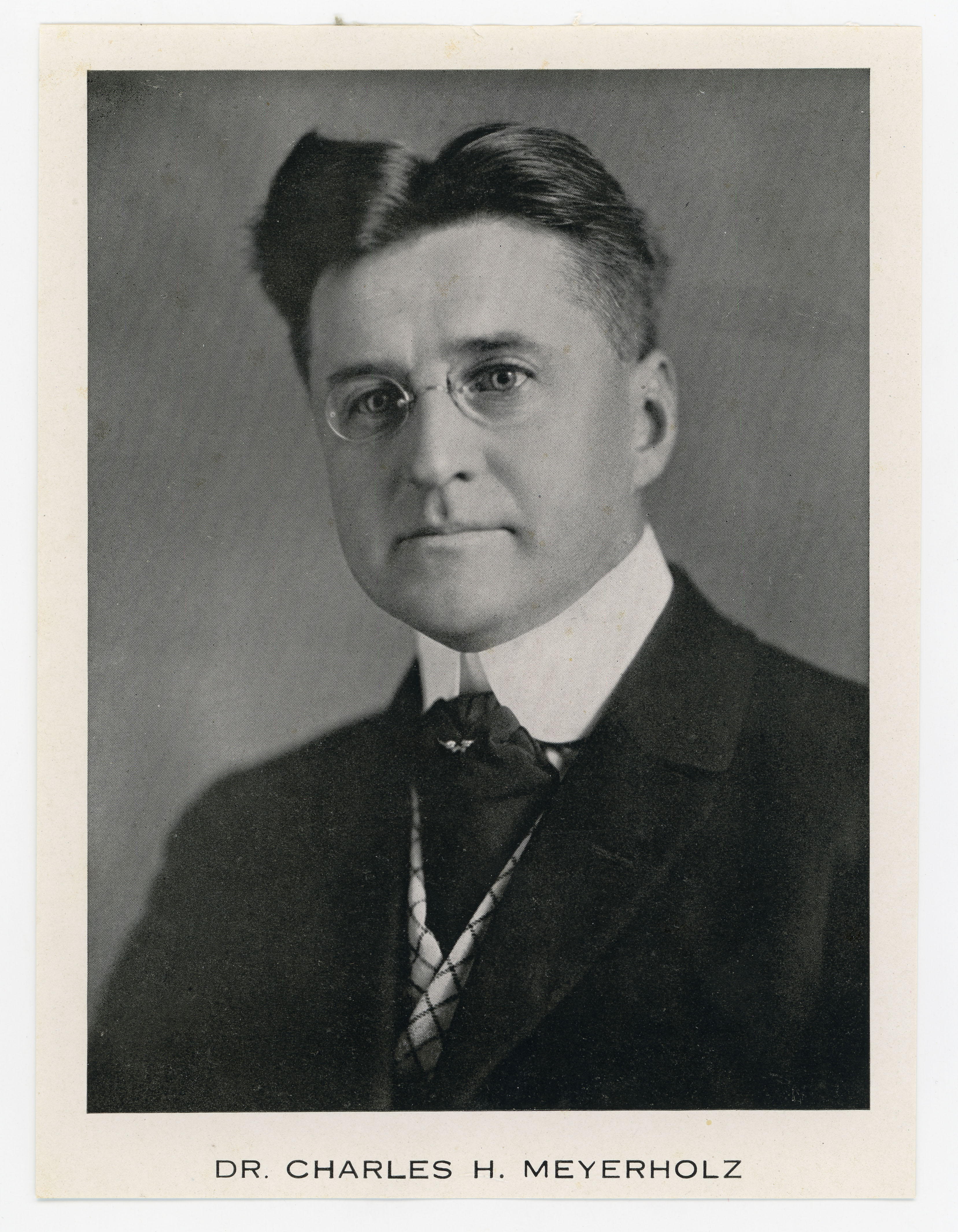
The Class of 1916 also decided to make its class gift to the Campanile fund, rather than establish its own smaller memorial. World War I put the Campanile project off track for several years. When the project came back into focus, construction costs had escalated considerably, and, while pledges continued to come in, actual cash contributions were not especially strong. Several classes in the early 1920s gave whatever small amounts of money that they had accumulated from dances or other promotions to the Campanile project. While students continued to be targets of Campanile fundraising efforts, the sheer size of the sum needed--estimated at $50,000--made alumni better prospects for cash donations.
Perhaps students got the impression that the Campanile was just too big a project for their contributions to have any great impact. Perhaps smaller projects had greater appeal and more immediate effect. The Class of 1922, for example, gave a briefcase to Professor Charles H. Meyerholz, its class sponsor, on his departure from the faculty after the spring term of 1922.
The Class of 1923, after joking that the best gift to the school would be a case of paper towels for the restrooms, gathered enough funds to present an engraved sundial to the school. They took some mild ribbing from the College Eye about their conservative nature that took "no stock in such newfangled contrivances as clocks and electric bells." The Class of 1924 responded to the ongoing fundraising appeal and pledged $2000 to the Campanile.

The Campanile was substantially completed in 1926, though with a sizeable loan to be paid off and some finishing touches yet to be made. The Class of 1928 decided that it wanted to assist with the Campanile debt and also to present engraved medallions to the school. The medallions would feature President Homer H. Seerley, who would be retiring in 1928, and Principal James Cleland Gilchrist, the first head of the school. The medallions would be sixteen inches in diameter and would cost $588 apiece. They would be made by the Gorham Company, of Providence, Rhode Island, a firm well-known for its fine metal products. The Class of 1928 had apparently been less than careful with its treasury. They were, in fact, in debt. So they formed a team that aimed to visit every member of their class and to collect fifty cents per term for each term in which the class member had been enrolled at the Teachers College. It is unclear how much the class collected, but they did raise enough money to cover their debt and to pay for the medallions.

The writer of a feature article in the Alumnus in 1933 described a walk around campus with special attention to class gifts. He noted the Class of 1881 boulder, the three gateways, the sundial, and, the crowning achievement, the Campanile.
After the Campanile
That was the end of any special class gifts for a long time. The Depression probably soaked up any spare change that a senior might have had in the 1930s. World War II, followed by the hectic pace of postwar life, probably left little time or money for the more sentimental aspects of college life.
The tradition of class gifts revived in 1962 for at least two significant reasons. First, in 1961, the name of the school changed to reflect a new, expanded mission. Until 1961, the sole mission of the school, the Iowa State Teachers College, was the preparation of teachers. All students took the professional sequence in education. But in 1961 the General Assembly broadened the mission of the school to include non-teaching, liberal arts degrees. In keeping with that expanded mission, the name of the school became the State College of Iowa. The Class of 1962 would be the first class to graduate from the school under that new name. And, second, the State College of Iowa Foundation, organized in 1959, was beginning to understand its function and to expand its role in college affairs. Consequently, the Class of 1962 and the Foundation worked together to develop an appropriate remembrance of the class.
The Class of 1962 decided to ask each senior to donate one dollar per year, over the coming twenty-five years, to build a fund that they hoped would reach about $15,000 by 1987. The class would decide what to do with the money at its twenty-fifth reunion. The class organized a committee of fifty members, led by chair Jalaa Domer, Bob Button, James Carr, Charlyn Cleveland, Mary Ann Lee, and John Schlicher. The committee canvassed dormitories and made special arrangements to talk with off-campus students. Their efforts met with good success. By May 11, 1962, the committee reported that 75% of the class had responded positively with donations or pledges. By May 25, the figure had risen to 87%. The total cash received at that point was $200.50, certainly a small sum by the standards of later years. However, Director of Alumni Affairs Milo Lawton took the whole matter as a tribute to the Class of 1962 and as a validation of the work of the Foundation. He said:
The enthusiasm and interest in the SCI Foundation exhibited by the senior class is most heartening. I am convinced that they will establish a standard of participation for their class that will be hard to surpass.
When the Class of 1962 met for their 25th reunion, they had accumulated about $6250 in their class gift fund. They decided to give that money to develop an exhibit of a collage of Iowa history in the UNI Museum.
The Class of 1964 was the next senior class to consider a class gift. Their goal was to raise $5000 to furnish the Browsing Room in the new Library that would be completed in the summer of 1964. This would be part of a campus-wide fundraising effort to furnish the new building appropriately. The campus goal was to supplement the overall project budget by 2%. The seniors, with the assistance of the SCI Foundation, planned to ask their classmates to make pledges that would be payable over three years. The Library did receive donations that were used for furnishings, but it is unclear now exactly how much of that money came from the Class of 1964.
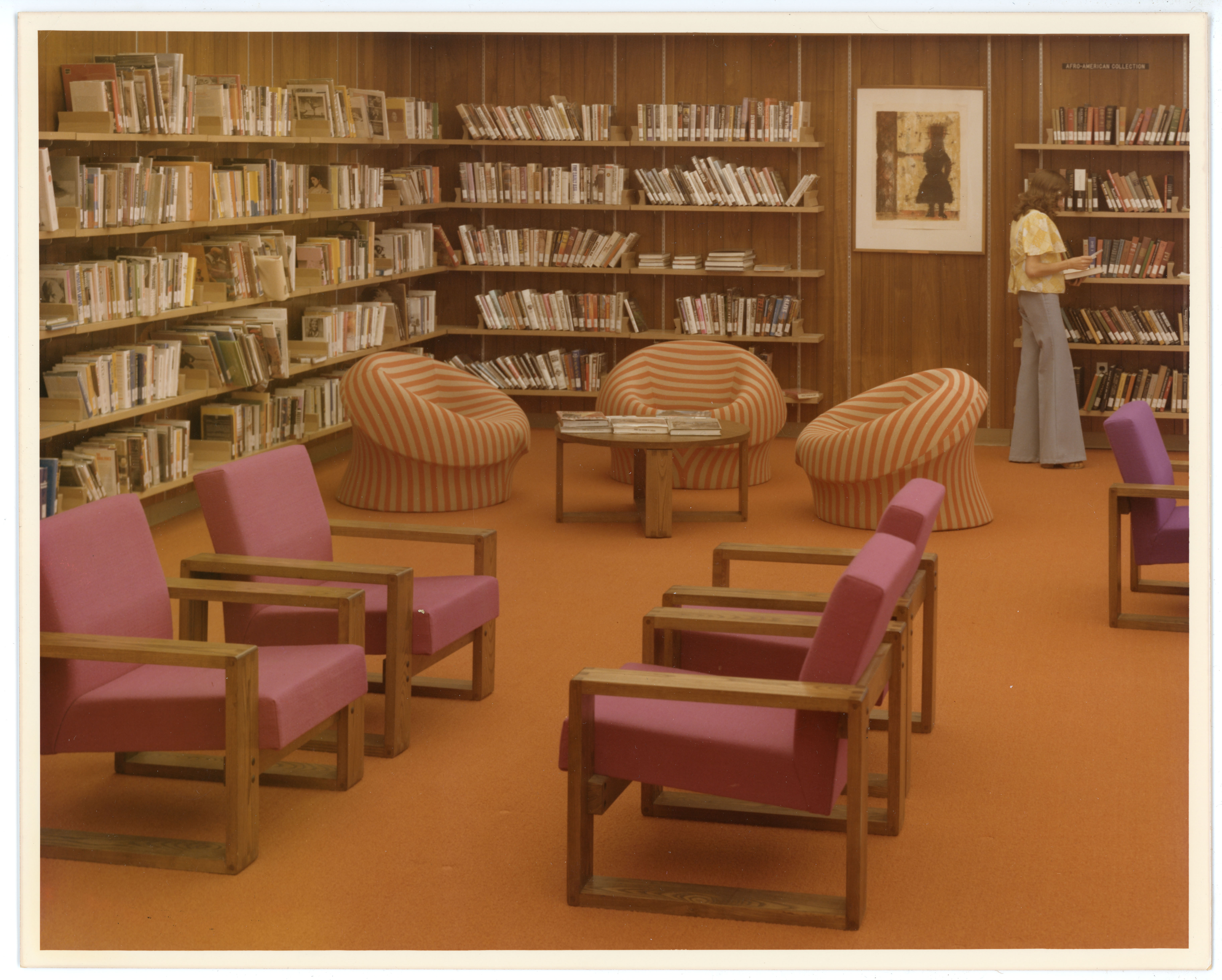
The Class of 1965 chose to donate funds for a speaker system and microphone outlets for a new Union, though construction would still be several years in the future. That system was finally installed in the Hemisphere Lounge in 1972 at a cost of $985.
The Class of 1966 chose to build upon an earlier class gift: the Campanile. The Campanile was originally constructed with a fifteen bell "chime". That was adequate, but it severely affected the size of the repertoire that could be played on it. In addition, the action mechanism that struck the bells was clumsy and hard to work. The SCI Foundation decided to support a project to add thirty-two bells and to update the striking mechanism. The additional bells would bring the Campanile up to the formal level of a "carillon". In February 1966, a large committee from the Class of 1966 considered other projects, such as scholarships and improved library and union facilities, but ultimately chose to support the Campanile project. Under the leadership of senior Maggie Brown, they aimed to raise $1000 to purchase at least one bell. A certain amount of controversy arose over this decision. Over the next several months, a number of seniors said that they had not had the opportunity to voice their ideas for a class gift. They believed that the matter should have been put to a vote. An editorial in the College Eye called for a vote on the matter to be taken during registration. However, the decision of the class committee back in February stood. Members of the Class of 1966 pledged a little over $1000 to the Campanile project.
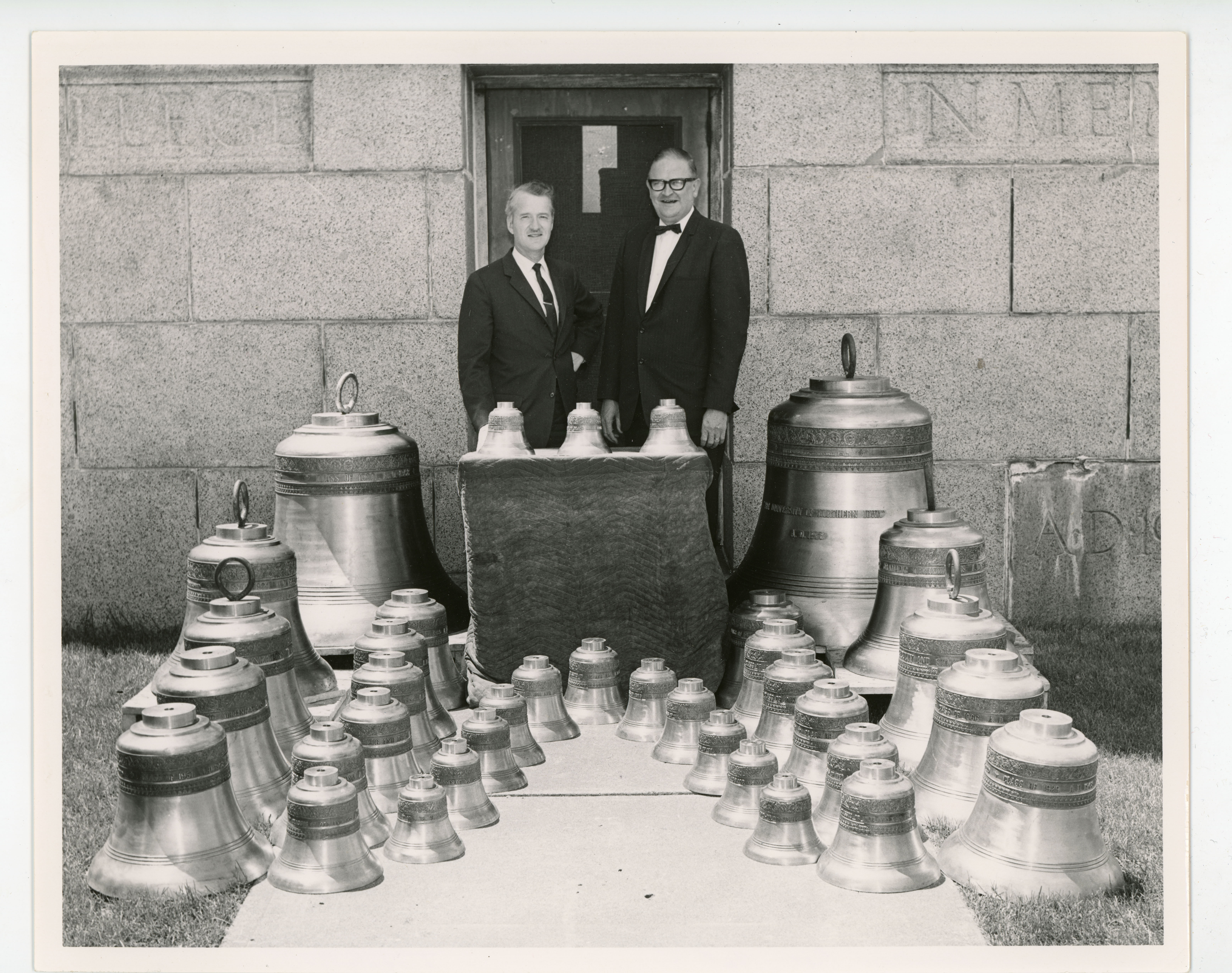
Perhaps everyone learned a lesson from this controversy. In April 1967, members of the Class of 1967 were asked for suggestions about their class gift. Resulting possibilities included:
- paintings
- a fountain for the new Union
- a scoreboard for the Gymnasium
- a Campanile bell
- a live panther
- a donation for a new auditorium
- a donation to KYTC, the campus radio station
During its Senior Testing sessions, the Class of 1967 voted to donate the proceeds of its fundraising efforts toward the purchase of original artwork for the new Union. The goal was to raise $5 from each senior.
The Class of 1967 was the last class to graduate from the State College of Iowa. In the summer of 1967, the name of the school changed to its current name, the University of Northern Iowa. All later gifts would be from graduates of UNI. The Class of 1968 decided to start a fund that would be only the first step toward a much larger goal. In 1968, many students and faculty believed that existing auditorium space on the UNI campus was inadequate. They believed that the auditorium in what is now Lang Hall was outdated and in poor physical condition. The size of its stage limited the kinds of performing arts that could be presented there. In February of that year, Professor Stanley Wood presented the findings of the Ad Hoc Committee on Auditoria Needs. The committee recommended three kinds of new auditorium space for the UNI campus:
- an auditorium seating 2000;
- a theater seating 800;
- a "coliseum" seating 10,000.
It took thirty years, but those recommendations were ultimately realized in the Gallagher-Bluedorn Performing Arts Center, the Strayer-Wood Theater, and the UNI-Dome, respectively. Students from the Class of 1968 could certainly not visualize these three major structures, but they did perceive that there was a significant need. And they wanted to get things started. Sue Milder led the effort to raise at least $3000, $5 per year, for three years, from each senior. She stated:
In arriving at the project, members of the organization committee felt that the auditorium needs of the university were desperate. Such a building does not receive sufficient funds from the legislature because of the more immediate priority of classrooms and office space. The project members felt that their efforts could start a successful campaign that would receive support from alumni and many friends throughout the country . . . .
The Class of 1968 ultimately pledged about $3500 to the auditorium project.
The Class of 1969 continued the same project, though they raised their goal. Project co-chair Adeline Alderson said that the class hoped to raise $10 per student per year over a three year period, with a goal of raising $5000. A chairman in each dormitory would contact seniors in his or her building. Other students would contact seniors who lived off campus. Despite the increasingly turbulent times of the late 1960s, when many students questioned just about all authority and tradition, the Class of 1969 did well in its fundraising campaign. By April 1969, the class had made over $7000 in pledges toward the auditorium fund; their pledge total ultimately reached about $7500.
The Class of 1970 followed the lead of the previous two classes in supporting the proposed auditorium project. And, at this point, that project was beginning to take a more concrete shape. President Maucker and Assistant Director of Alumni Services William Anthony outlined plans to the senior class. Mr. Anthony said that there would be a football stadium, a concert hall, and a small theater. The project would cost about $9 million altogether. He hoped that at least a part of the project would be underway by the university's centennial in 1976. The Class of 1970 raised about $8300 for the auditorium project.
The Class of 1971 also heard a presentation by William Anthony and came to the same conclusion: the auditorium fund would be the beneficiary of their class gift. They set their goal at $8000. Carol Blaisdell and Dennis Miller led the class effort. Dennis Miller cited a specific example of the need for new auditoriums. Due to space limitations, his class would not have a traditional, unified, all-university Commencement ceremony. Rather, each college would have its own Commencement.
The Class of 1972 chose a different path. Since the late 1950s, the campus had been fighting the Dutch elm disease. But, without universal support from the adjoining community, it was a lost cause. One by one, the magnificent elms that once shaded the sidewalks had been cut down and hauled away. Cool, shady walks were replaced by dry, sun-baked open areas. Consequently, the Class of 1972 chose to do something about that situation. They raised about $3000 to buy and plant trees to replace some of the lost elms.
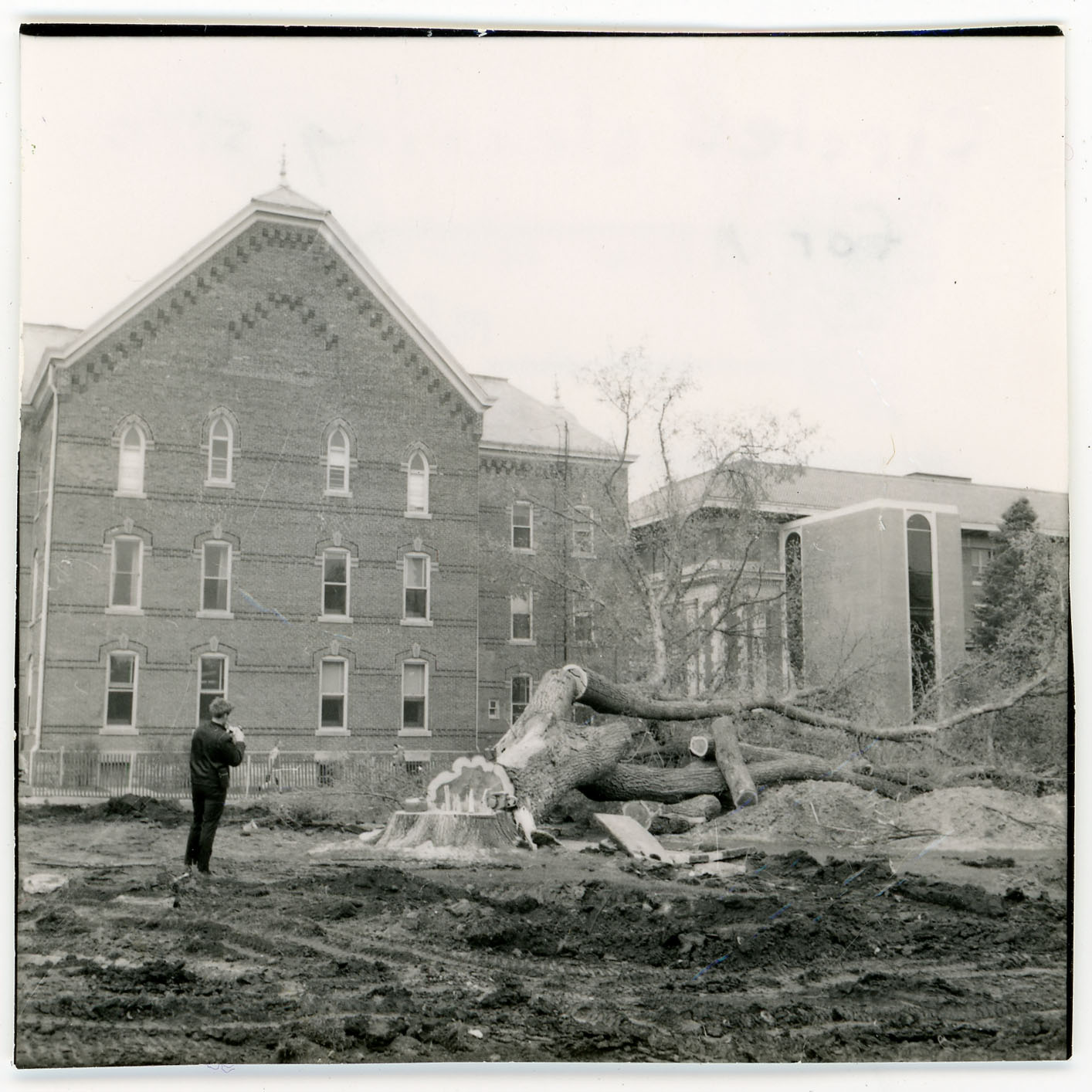
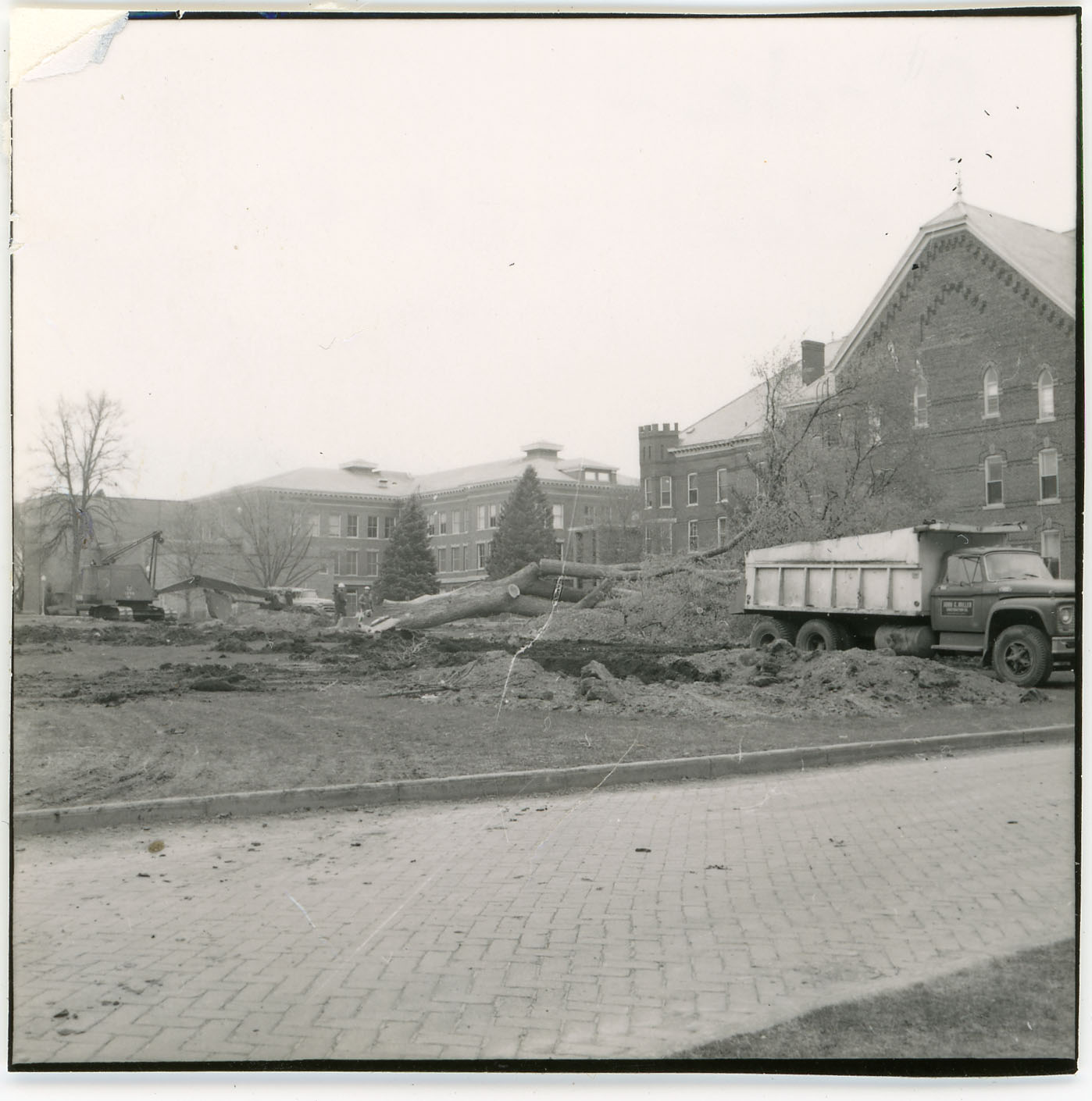
The Class of 1973 considered a restoration of Prexy's Pond, support for the Dome Project, a fence around Hillside Courts, and an addition to the Union before falling back into line and seeking $3000 in pledges towards the auditorium fund under the umbrella of the larger UNI fundraising effort, the Centennial Capital Campaign. The class of 1974 considered donations to the capital campaign, an addition to the Union, and a scholarship fund before making its choice, though, at this point, it is unclear what that choice was. The Class of 1975 donated funds for a lighted UNI sign along University Avenue.
The Class of 1976 decided to give two large flags to the UNI-Dome in honor of Wayne Morris. Members of the class wished to honor Mr. Morris for his work as Assistant Dean of Students, Associate Dean of Students, and then as Assistant Vice President for Student Services. Following the death of Mr. Morris on February 17, Vice President Thomas Hansmeier said that Mr. Morris "enjoyed the love, respect, and trust of students and the confidence of his colleagues." The two large flags to be hung in the Dome would be a fifty-star American flag and a Bennington Bicentennial flag. There would also be a plaque commemorating the gift.
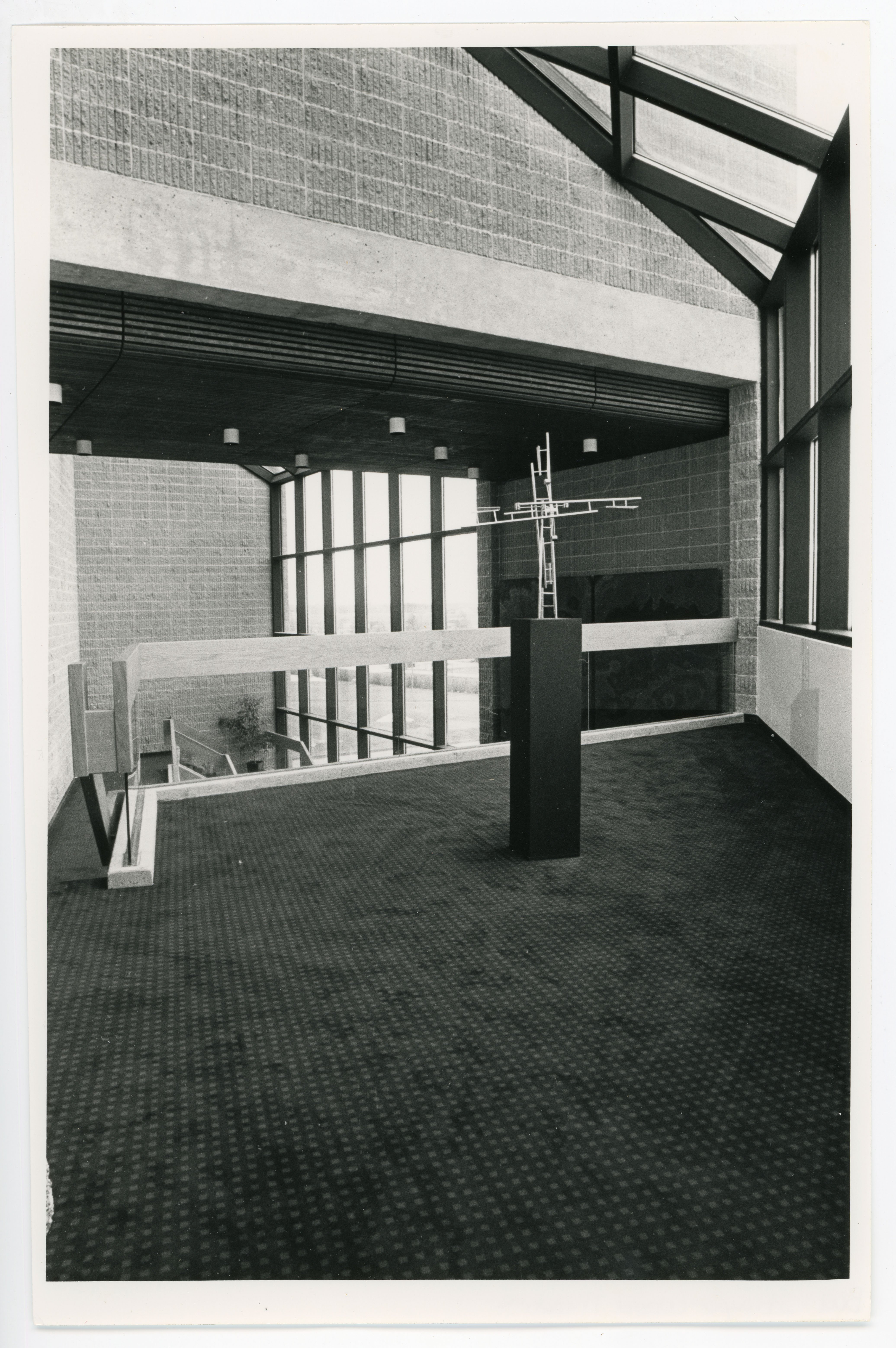
The gift of the Class of 1977 again aroused controversy with regard to both the method of selection and the selection itself. Apparently a committee of three students chose to fund a sculpture for the lobby of the Strayer-Wood Theater, then under construction. They then informed the senior class of their selection and asked for donations toward the work. Some students questioned the authority of the committee to make the choice. Others were apprehensive about yet another odd sculpture on campus; they thought scholarships, better outdoor lighting, or renovation of Prexy's Pond would be better choices. Others defended the committee and its choice; they believed that seniors should be grateful that the three committee members were willing to take the responsibility and to do the work. In any case, the decision stood. Donated funds from the Class of 1977 went toward a sculpture to be undertaken by alumnus Michael Maniatis.
The Class of 1978 followed the lead of the Class of 1977. It donated its gift to the Strayer-Wood Theater to purchase works of art.
The Class of 1979 took a more practical turn when it donated a lighted campus map to be placed near the information desk in the Maucker Union. The members of the Union Policy Board appreciated the gift. The map, mounted in early 1980, presented an aerial view of campus photographed from an elevation of about 8000 feet. It cost about $900.
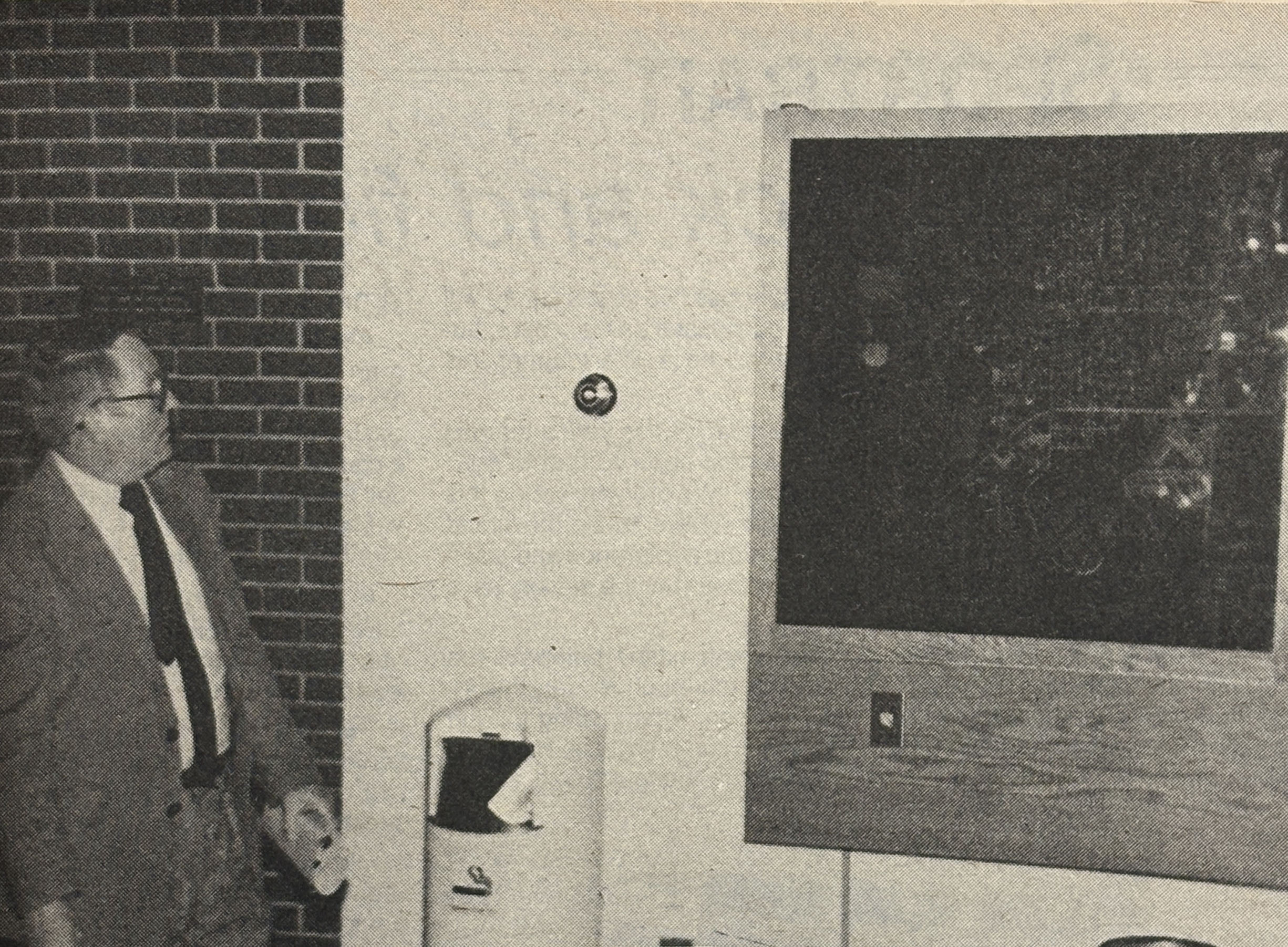
The Class of 1980 also stayed on the practical side. They decided to donate funds for a flag pole to be mounted along University Avenue. The campaign started strong. Just a few weeks after announcing the project, the class had raised $1500 toward its $3000 goal. But things apparently stalled at that point, and costs escalated to about $5000 for the project, which now included an American flag, an Iowa flag, and a UNI flag. Because there was not enough money to proceed, the Class of 1981, and then the Class of 1982 took up the same flag pole project. As late as April 1982, funding was still a bit short, but, one way or the other the fund reached its goal.
The Class of 1984 decided to assist fellow students who had visual impairments. They used class funds to purchase a Visualtek Voyager XL magnifier. The machine could magnify print materials up to sixty times and could be adjusted for contrast. Students with visual limitations could use it for class work or for practical matters, such as reading prescription bottles. Students with normal vision could use it to magnify small print. The Visualtek machine was located in the Library, where staff members Douglas Hieber and Tim Pieper provided assistance with the machine.

A New Era in Class Gifts
The gift of the Class of 1986 marked the beginning of a more serious effort on the part of the University's Development division to assist students with their fundraising. Since the modern era of class gifts had begun in the early 1960s, the Foundation had helped with class gifts. Early in the process, the Foundation's assistance was probably limited to offering casual advice and then serving as the custodian for any funds raised. Over the years, the role of the Foundation expanded. By the late 1960s and early 1970s the Foundation helped to draw up lists of possible gifts and even made pitches for their own pet projects, such as a new auditorium and then the UNI-Dome. Initially, students organized themselves to raise money for their projects. Typically they set up contact systems within housing units: a senior would contact all other seniors in his dormitory. This was effective to a limited extent. However, the results of the fundraising campaigns of the Classes of 1980, 1981, and 1982 are clear indications that the limits were set fairly low. Amateurs, working on their own, could raise only so much money. $3000 seemed to be about as much as could be expected.
In 1986, the Development office, specifically Director of Annual Giving Dee Vandeventer, became much more involved. Ms. Vandeventer said that the Class of 1986 wished to set a new, higher standard for class participation and giving. The class would sell discount booklets for $2 apiece. Those booklets would provide discounts for purchases at area merchants. The booklets would also provide admission to a series of events, including a class barbecue, during Senior Week, April 13-18, 1986. The goal was to raise $10,000, which would be used to purchase six locator maps that would be placed around campus. They called their effort the Senior Challenge, a name that stuck in succeeding years. The Class of 1986 committee, led by Curt Goswick, got a late start. They raised just $380 on sales of the discount cards. But a four day phone-a-thon more than made up for this limited beginning when it garnered $16,750 in pledges to be paid by January 1988. Thirty-nine per cent of seniors made pledges. If the money actually received exceeded the $10,000 goal, it would be used to landscape the locator maps. A portion of the funds eventually resulted in the construction of an information kiosk near the Commons.
The1986 Senior Challenge group had included one junior, Corinne Dogotch. Her experience with that group made it possible for the Class of 1987 to get off to an earlier, better informed start. The Class of 1987 would have the chance to vote on prospective projects when they registered for the spring semester in November. Their options would include:
- Renovation of the corner of University Avenue and College Street
- Development of the courtyard between the Communication Arts Center and the Strayer-Wood Theater
- A student group meeting room in either the Library or the Union
- A scholarship for seniors endowed by the Class of 1987
- An electronic group meeting board
Although the scholarship was a close second, the students chose the renovation of the University Avenue-College Street corner. That highly visible area had looked very rough for many years. It badly needed clean-up, landscaping, and improvement.
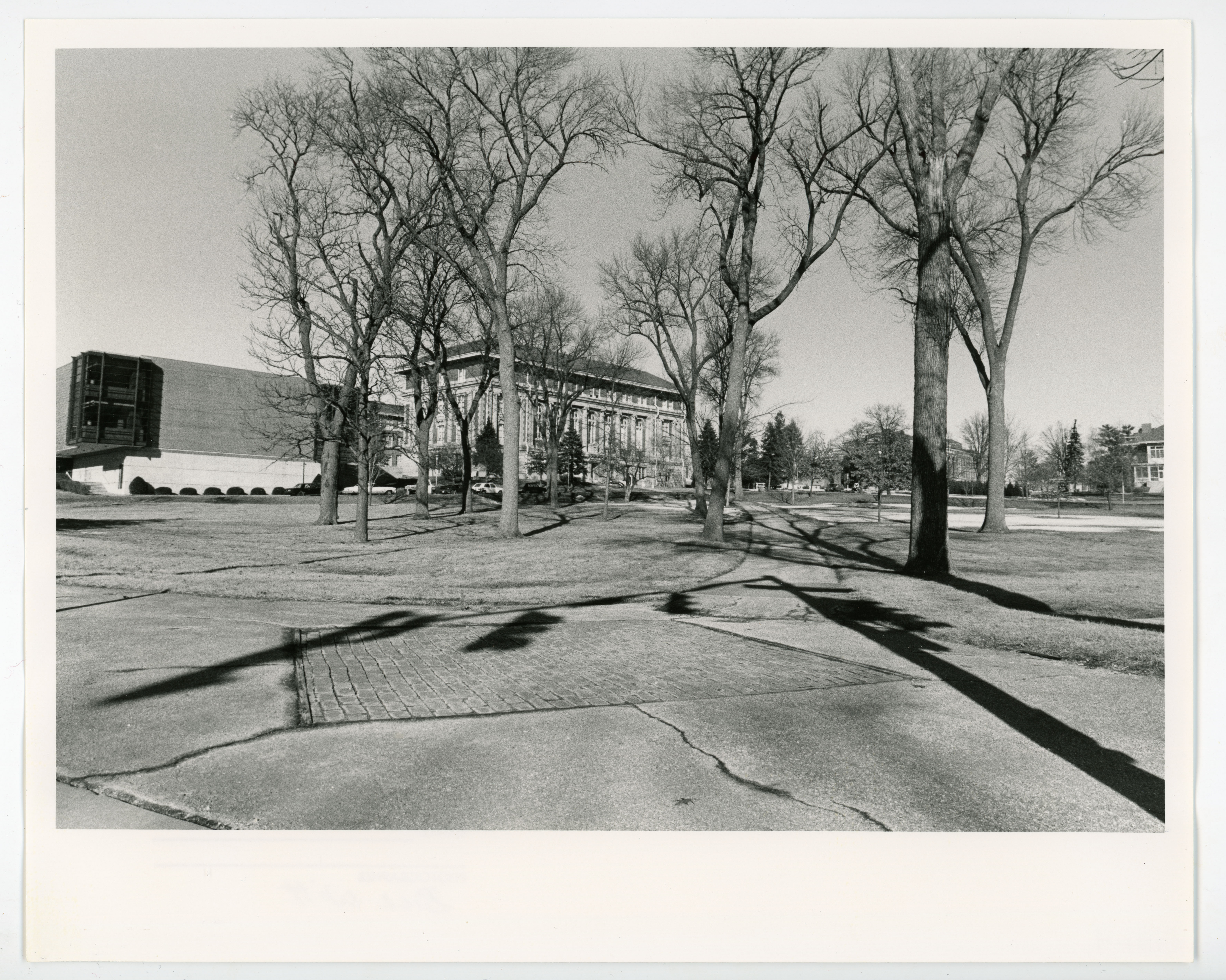
Dee Vandeventer again led Development efforts to assist the seniors. She estimated that the project would cost about $25,000. There would be Senior Week activities followed by a phone-a-thon seeking pledges. But the Class of 1987 would not necessarily bear the burden of raising that entire amount. The Development office would also be contacting members of the Class of 1937 for donations to the project. The campaign was extremely successful. Seniors pledged $43,000 to the project. The Class of 1937 contributed an additional $10,000. By that time, the price tag for the project had risen to $35,000. Any funds received that exceeded that amount would go toward additional new sidewalks and landscaping. Clearly, with numbers like that, class gifts had risen to another level. The group had reached about 2000 of the 2403 members of the class via telephone. Forty-two per cent had made pledges.
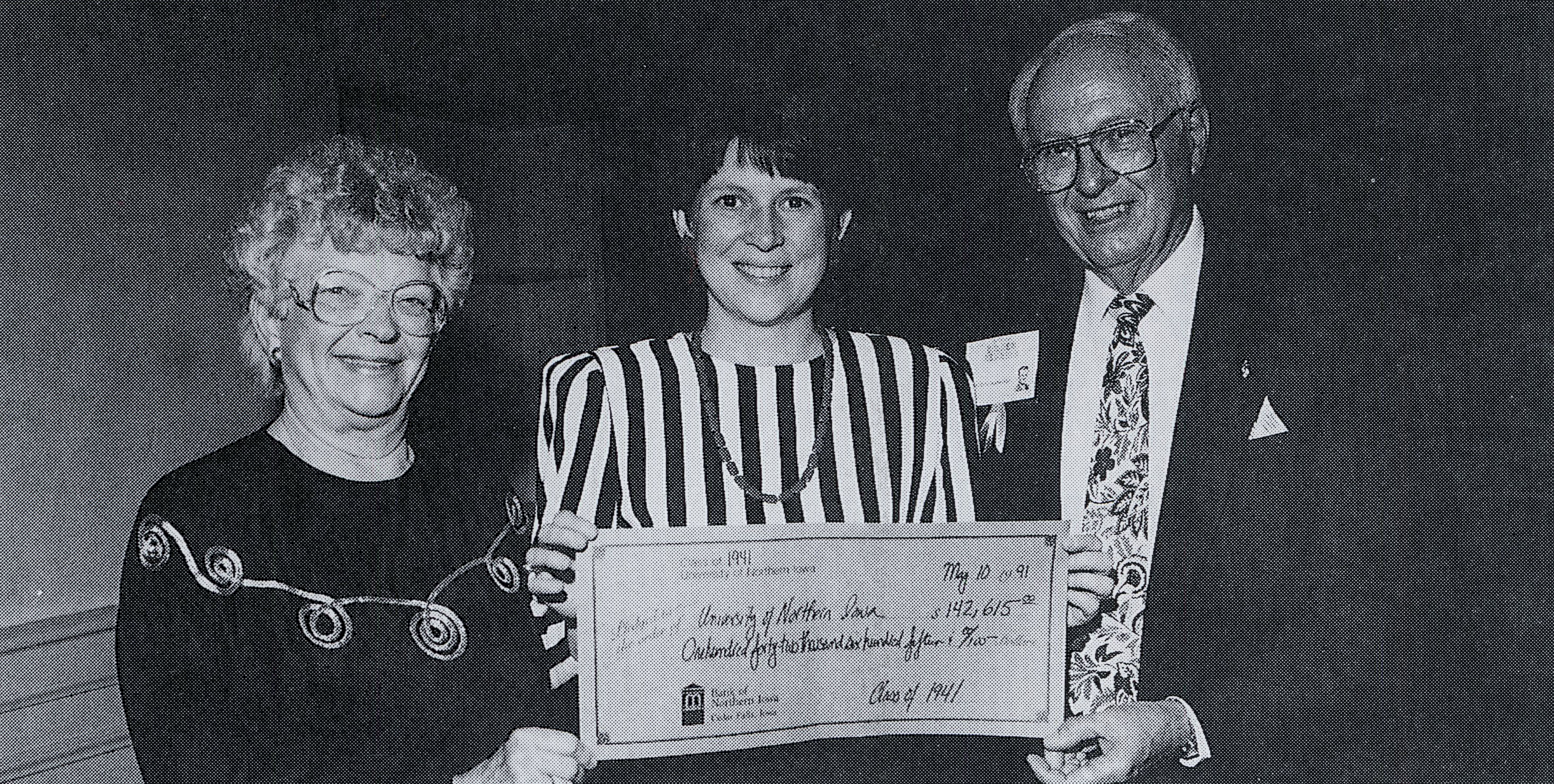
The gift of the Class of 1987 looked back over seventy years in UNI's history, back to the Classes of 1912, 1913, and 1914. Those classes wanted the campus to look dignified, settled, and perhaps even stately. Their gifts made possible the construction of three attractive gateways on the east side of campus. By 1987, two of the gateways had been demolished. Only the gateway at the corner of 23rd and College Streets remained. The new gateway at the corner of College Street and University Avenue was a nice, symmetrical addition. At least the northeast and southeast corners of the old, traditional campus were anchored by attractive entrances.
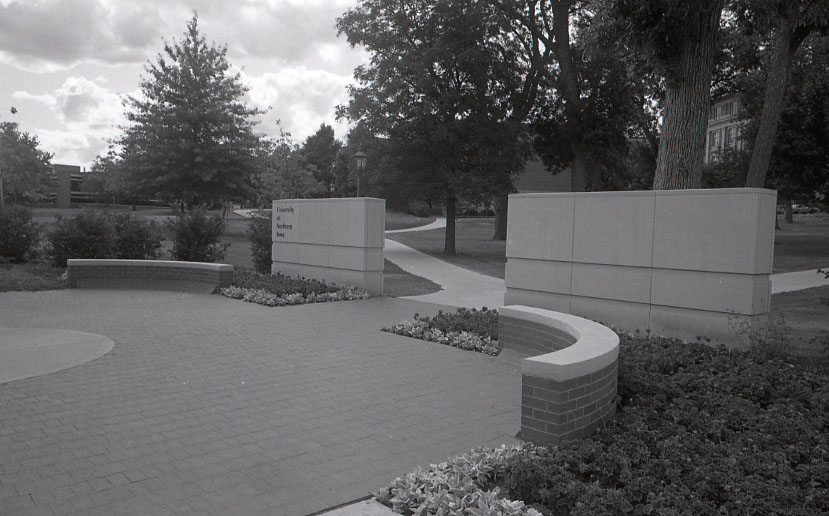
The Class of 1988 doubled the goal of its predecessor. They sought to raise $50,000. Their options included:
- Assisting in the computerization of the Library card catalogue
- Relocation or reconstruction of Prexy's Pond, which would be lost in the construction of the new Business Building
- Establishment of an Outstanding Faculty Award
- Improvement or construction of places where students could relax
- Additional development of the courtyard between the Communication Arts Center and the Strayer-Wood Theater
Director of Library Services Barbara Jones wrote a letter to the Northern Iowan urging seniors to support the library catalogue option. She concluded by saying:
I think the senior class could make no better investment in UNI's future than to make such a "high tech" commitment to research and study.
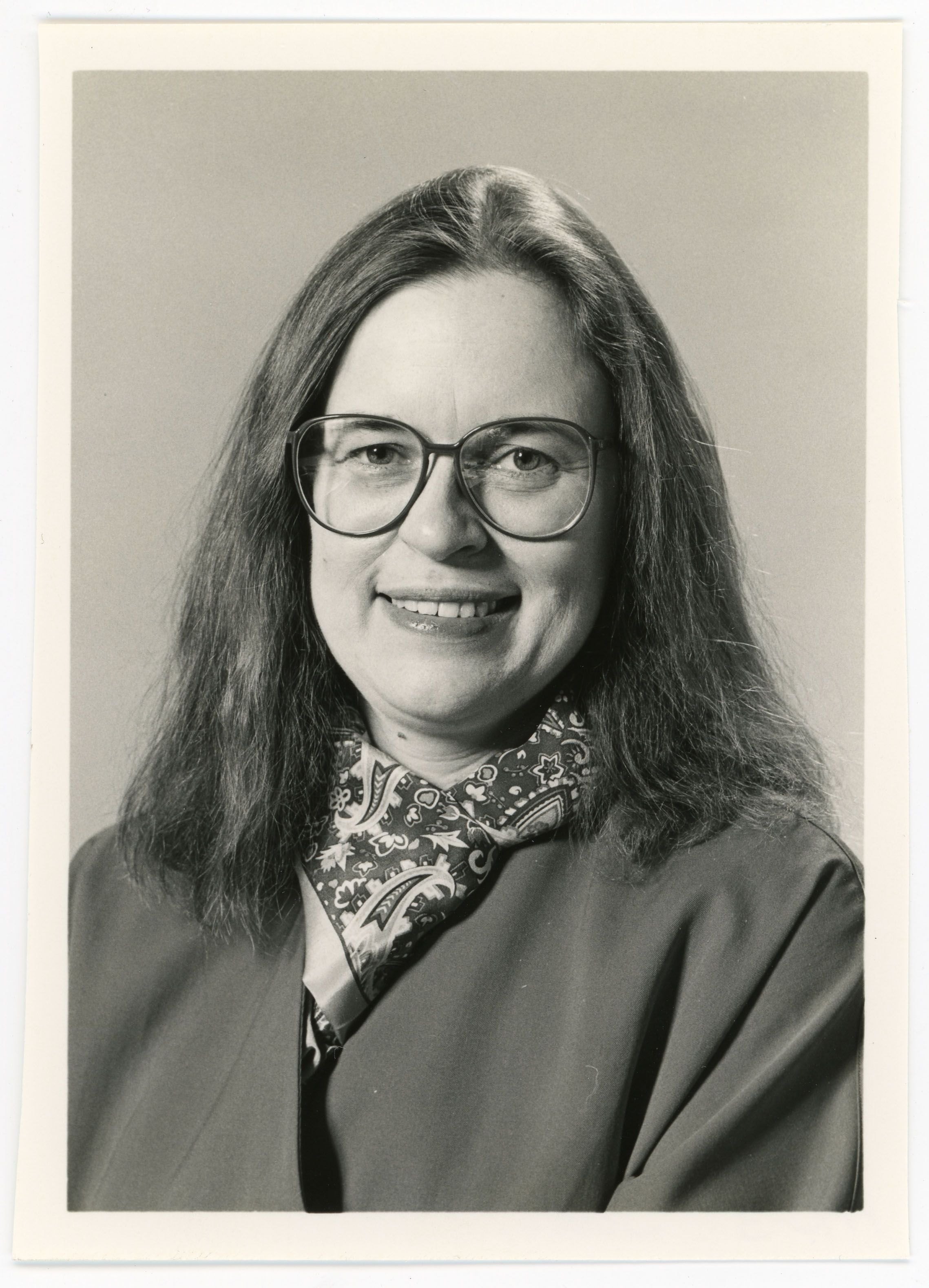
Whether or not they were influenced by the Library Director's appeal, the seniors did vote to support the computerization of the Library card catalogue. Of the 520 seniors who voted, 293 selected the library option. Reconstructing Prexy's Pond was a distant second. Barbara Jones said that she was "absolutely delighted" and thanked the seniors. But she cautioned students that there was a lot of work to be done before the new catalogue would be available. She also made clear that even a $50,000 investment would provide only a start to the computerization. Bringing the work to completion would require considerably more money, possibly $500,000. Still, she appreciated the confidence and support of the students.
The Northern Iowan strongly supported the fundraising campaign in an editorial in April, just prior to the phone-a-thon. In addition, the Development Office made it possible for faculty and staff to support the campaign with matching money. Also, perhaps for the first time, the Development Office hired students to help make the telephone calls. The effort was a success. Seniors pledged $52,000, and faculty and staff pledged an additional $3000.
The Class of 1989 increased its goal just slightly to $55,000. Their voting options were:
- An information desk in the Union
- An amplification system in campus auditoriums
- Renovation of the Campanile
- A drive-through information directory in the north Dome parking lot
- Better outdoor lighting to enhance campus safety
The Campanile renovation project won by a slim margin over the option to improve outdoor lighting. The fundraising campaign would include the usual discount card, Senior Week activities, and a phone-a-thon. The seniors met the challenge: they pledged $55,794 for the class gift. The Development Office went so far as to publish a list in the Northern Iowan of those who had pledged. As an independent gift, the Class of 1939, in commemoration of the fiftieth anniversary of its graduation, gave $16,000 to enhance cooperative education at UNI.
The Class of 1990 got a very early start on its Senior Challenge. Already in April 1989, before the Class of 1989 phone-a-thon was completed, the Class of 1990 was soliciting ideas for its own gift. Clearly, the Senior Challenge program, with continuing guidance from Development staff member Dee Vandeventer, had become a well-organized and highly-orchestrated effort. By September 1989, the Senior Challenge Committee had developed twelve possible projects and had set a goal of $60,000. By November, the list had been winnowed to five options:
- Improved outdoor lighting
- Seed money for a new all-weather track
- Landscaping or a fountain near the new Business Building
- Replacing and updating seating in the West Gymnasium
- Campus-wide park benches
Students strongly favored the option for improved lighting, with Business Building landscaping a distant second. The lighting option would seek to restore historical light fixtures in the older portions of campus. By early April the seniors had raised $30,000. By mid-April, under the leadership of co-chairs Liz Arends and Tracy Vander Schel, they passed $60,000. At that same time, the committee for the Class of 1991 was already at work on their Senior Challenge.
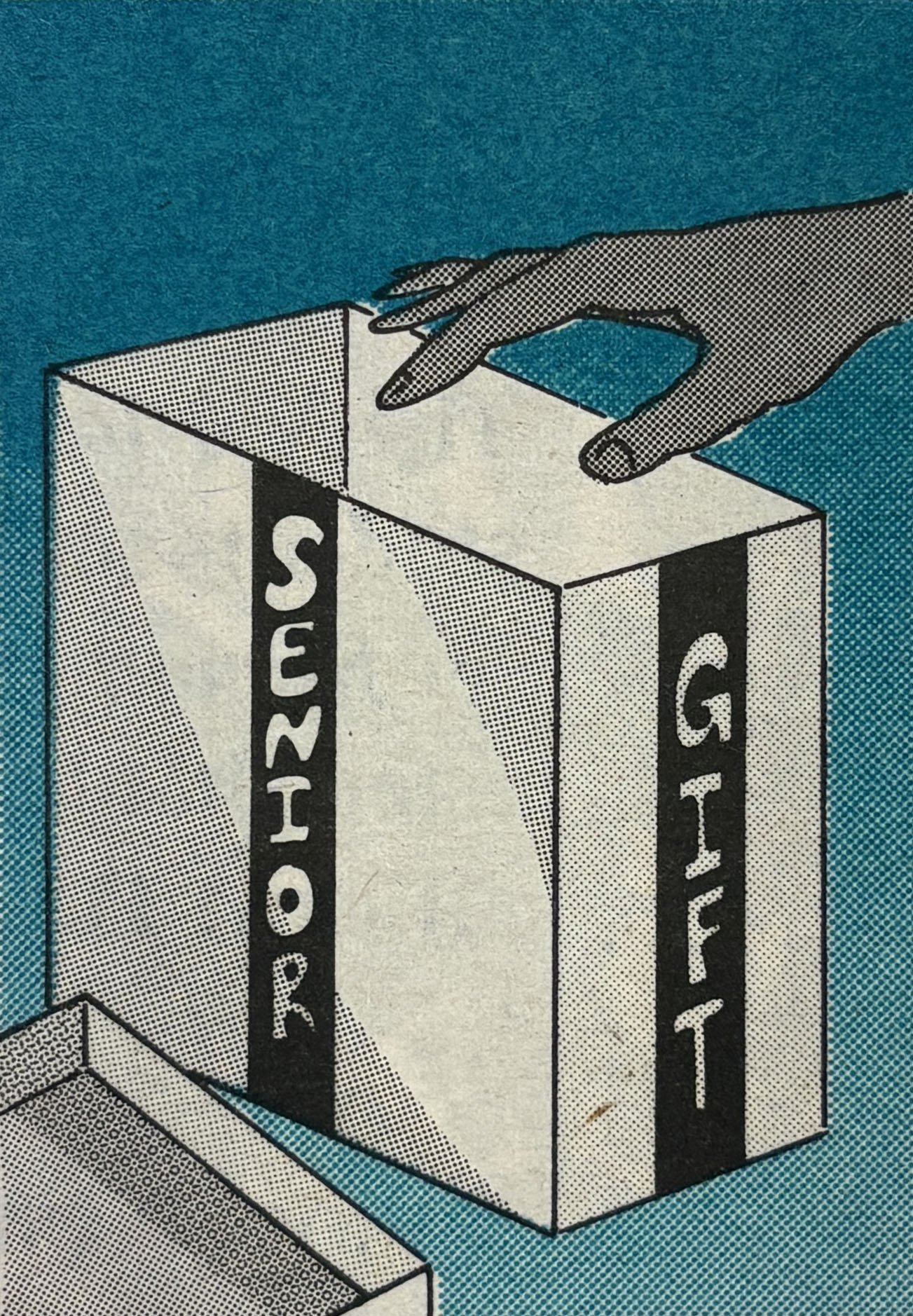
The Class of 1991 organized a contest to design a logo for their Senior Challenge. The winning entry would receive a $50 prize. Assistant Director of Alumni Relations Jeff Liebermann assisted with this campaign. David Marchesani and Meri Schoer were the student co-chairs. The Senior Challenge Committee would consist of thirty seniors and five juniors. The juniors would assume leadership for their own campaign in the following year. While the Development Office certainly assisted the committee, Mr. Liebermann emphasized that the class gift would be a "completely senior run and senior bought product." The Class of 1991 set its goal at $65,000. Options for the gift were:
- Maucker Union Coffeehouse/Deli/Pub
- Additional Library automation
- West Gymnasium renovations, especially seating
- Campus-wide park benches
- Contributions to an all-weather track
This list shows that unsuccessful options from previous years tended to receive second chances in succeeding years. The Union coffeehouse idea came in first, with 35% of the vote. Library automation finished second with 24%. The new coffeehouse, ultimately known as Club 91, would be located in what had been the gameroom of the Maucker Union. One senior was very happy with the choice of the gift and its name. In a letter to the editor of the Northern Iowan, Shawn Claude wrote:
The thought of having a place in the Union that serves pizzas and subs and provides an entertaining getaway atmosphere almost makes me want to be a freshman again. Well, not really. Anyway, I think it's a wonderful gift; and I hope the rumored name, "Club '91", is given to this new hot spot.
Early returns from the phone-a-thon showed a total of $27,000. Final returns showed a total of $66,090 in pledges, a bit over the goal. Construction on Club 91 got under way in the spring of 1993.

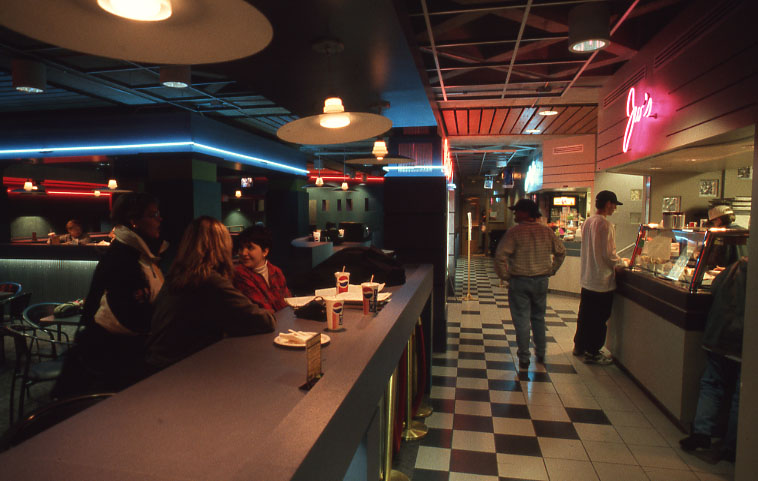
The Class of 1992 established a goal of $70,000. They made their selection of a class gift from four, rather than the usual five, options:
- A fountain near Maucker Union
- Campus-wide park benches
- Restoration fo outdoor campus artwork
- A Class of 1992 scholarship endowment
The class chose the scholarship endowment option. If the $70,000 goal were reached, it would likely be possible to award a $4000 scholarship annually, with the first scholarship available in about four years. The Class of 1992 came close, but fell a bit short of meeting its goal. It raised $65,000. Jeff Liebermann blamed the shortfall on two factors. First, the phone-a-thon failed to reach quite as many seniors as it had in previous years. And, second, he said that contributions ultimately hit a kind of ceiling of giving. Unless there were a significant increase in the number of seniors, there would be a limit to the amount of money that could be raised.
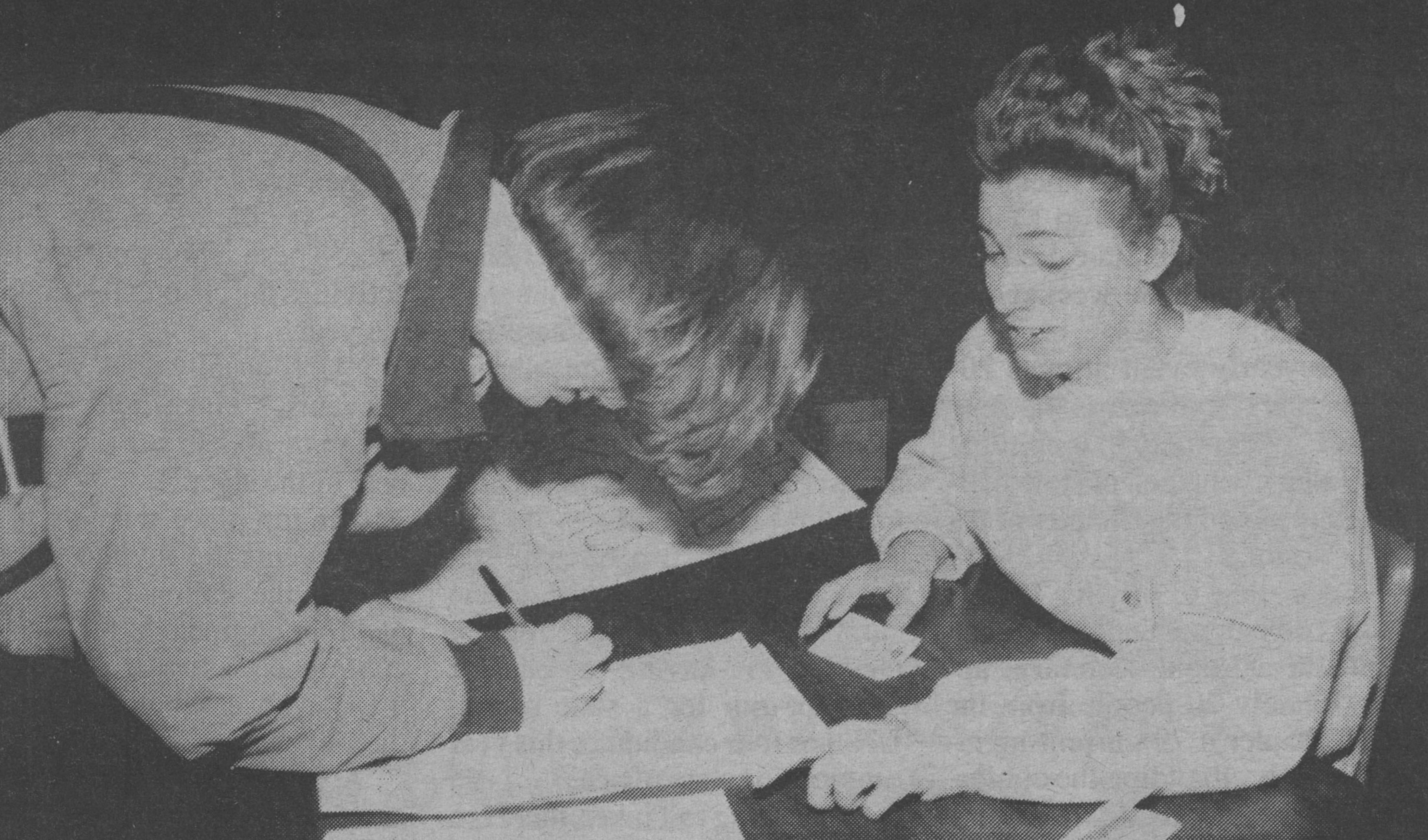
The Class of 1993 set its goal at the same level as that of the previous class: $70,000. They would select their gift from five options:
- Campus-wide park benches
- An outdoor recreation center
- A fountain
- A new pond to replace Prexy's Pond
- An outdoor track facility
The seniors decided to build a new pond, with forty-seven per cent voting for that option. Jeff Liebermann noted that there were two possible sites for the pond: in the open area south of the Business Building and as part of the new Performing Arts Center development. Neither of those sites worked out. And other appropriate sites could not be identified until the idea for a Memorial Garden arose a few years later. With the permission of those who made donations, the funds raised for the Class of 1993 gift ultimately went toward the construction of a small pool in the Memorial Garden.
The Class of 1994 made its selection from among the following options:
- Equipment and programming money for the proposed Wellness Center
- An outdoor recreation center
- A gift for the Performing Arts Center
- Additions to Club 91
- Contributions to an outdoor track facility
The seniors decided to support the outdoor recreation center, though the Wellness Center option ran a close second. Again, they fell a bit short of their goal. Their gift resulted in an outdoor sand volleyball court.
The Class of 1995 was organized early in the fall 1994 semester by Senior Challenge Committee leaders Brad Halvorsen and Kristi Marchesani. The committee worked on the usual array of activities: a student discount card, Senior Week events, and class gift selection. Jeff Liebermann, of the alumni relations staff, continued to advise the committee. Seniors made their selection of a class gift from four options:
- An improved visitor center--either an addition to the existing structure or a new structure in a different location
- A donation to the UNI capital campaign--either for the Performing Arts Center or an outdoor track facility
- A monetary gift to the UNI Museum
- A donation toward equipment at the Wellness/Recreation Center
The campaign goal was again at the $70,000 level, with payments spread over as many as five years. Mr. Liebermann said that a typical student pledge was $100, and that it usually took about five years for pledges to be paid. The Class of 1995 decided to make a donation toward equipment for the Wellness Center. Construction on that project was scheduled to begin later that year. The seniors raised about $55,000 for their gift.
There was some criticism of the Senior Challenge Committee of the Class of 1995 for not giving sufficient publicity to its work and its selection of gift options. The Class of 1996 did its best to overcome that criticism by publishing notices about its meetings and activities on a regular basis in the "What's Up" column of the Northern Iowan in the fall of 1995. The gift options were:
- An electronic message board near Maucker Union
- A gift to the Performing Arts Center, possibly for a lighting or sound system
- A donation for an outdoor track
- An expansion of parking facilities
The seniors chose the expansion of parking facilities by what was described as an overwhelming majority of the six hundred students who cast their votes. Frank Esser, Director of Special Gifts in the Advancement Office, said that he did not know how to compare this gift choice with perhaps more traditional choices such as equipping a building. But he did admit that "It is a different kind of gift. It shows what's important in the minds of UNI students right now." Early plans were for the money to go toward parking in the Campbell Hall area. The Northern Iowan was extremely enthusiastic about the choice. In an over-the-top editorial following the selection, the staff wrote:
For the first time in a long time, a graduating class of UNI seniors has decided to donate a worthwhile gift to the university . . . This year's class chose wisely when they chose to expand parking. Unlike traditional gifts which serve only an aesthetic purpose, this gift will actually benefit future generations of UNI students . . . All those who voted for the new parking should be congratulated for picking a practical gift which will benefit the university.
Those were strong words both of praise for the senior voters and also of implied criticism of earlier class gifts that were apparently perceived as being impractical and, perhaps, out of touch with the wishes of most students. The editorial voiced the sentiment that equipping a new building would be nice, but finding a place to park was higher on the list of priorities for the Class of 1996. The Senior Challenge Committee had fun with the theme for their fundraising campaign: "Giving a lot back to UNI", a quite clever play on words.
The Class of 1997 returned to more traditional ground when it chose to support a scholarship with its class gift. The Class of 1998 considered several options, including a memorial in the Lang Hall auditorium, but selected an endowed scholarship as its gift. It hoped to raise $50,000 to fund that scholarship. The organizing committee, now called the Senior Class Council, hoped to award its first scholarship of $2000 in the fall of 1999. Keevan Sweeney was the advisor to the council, which undertook quite a range of activities including a run, a special night at the Wellness/Recreation Center, discounted pool at the Union, discounts at College Square Mall, mini-golf, and free pizza. There was even a small philanthropic project: Seniors Helping Seniors at the Cedar Falls Lutheran Home.
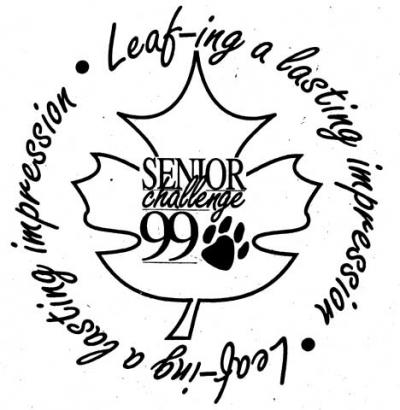
The Class of 1999 chose to help landscape the Performing Arts Center, particularly the side facing University Avenue. Other options included bleachers at the outdoor track facility and a scholarship fund. Voting was conducted via E-mail, with about three hundred seniors responding. The class set its goal at $20,000, a considerable step down from earlier class goals. Those who pledged at least $100 would be entered into a raffle whose winner would receive two airline tickets to any US destination and a $500 travel voucher, both sponsored by the Shorts Travel Agency. By April 30, 1999, the class had raised $14,000.
The Class of 2000 decided to attach its gift to a larger, but appropriately named project, the Millennium Garden. A committee from the Student Alumni Ambassadors had originated an idea to commemorate the new Millennium with some sort of gift. They settled on a garden, which would be funded solely by donated funds.
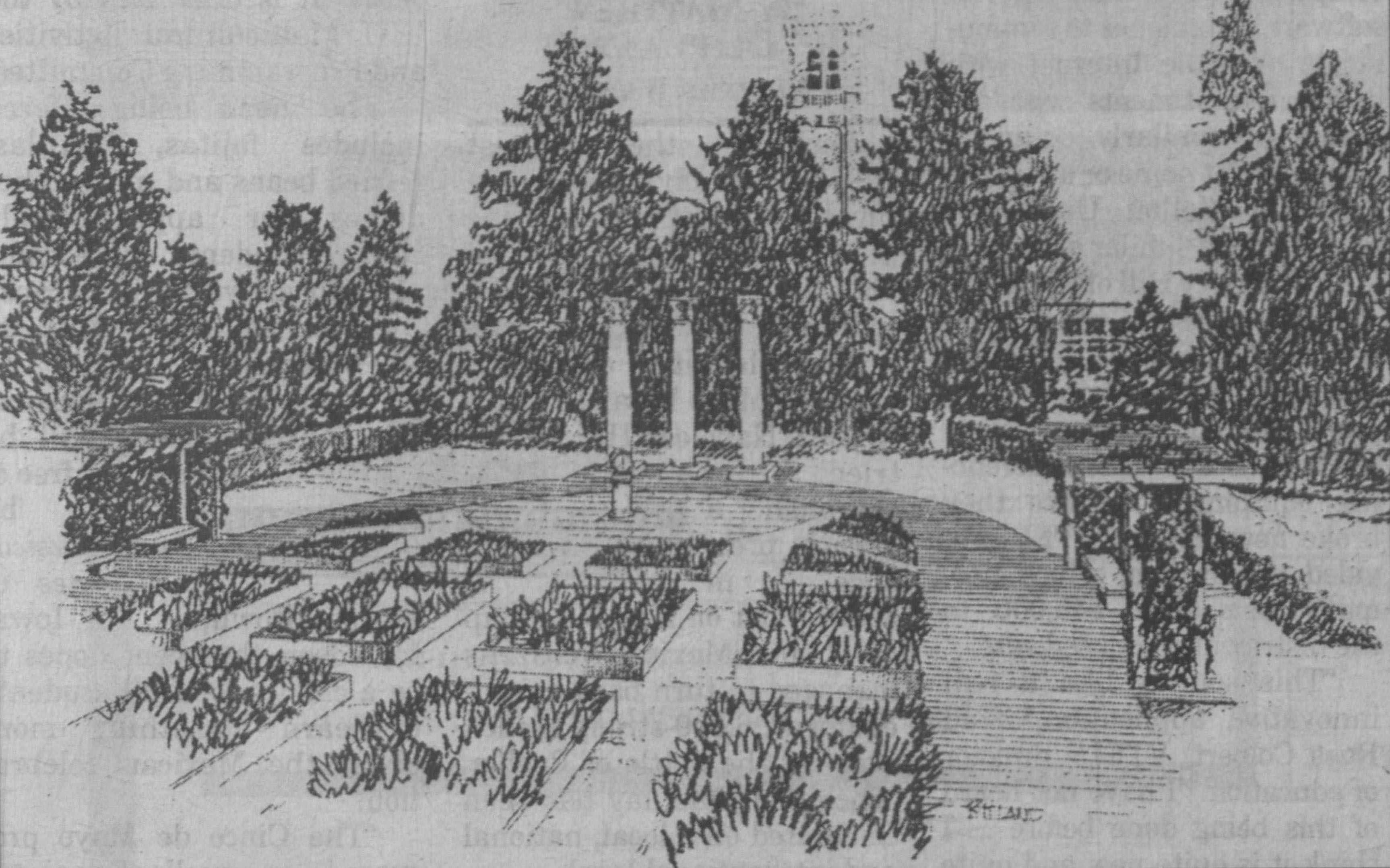
The cost for the whole project would be well over $100,000, possibly as much as $250,000. The Class of 2000 liked the idea, but wanted its own recognizable, yet affordable space within the garden. According to Nick Arnold, co-chair of the Senior Class Council, "The class voted on a 'gathering space', which might include a gazebo, fountain, benches and landscaping or a combination of any of those items." The class raised over $18,000, though one later account says that it was $20,000. Also in 2000, at its golden reunion, the Class of 1950 donated $57,000 for restoration work in Lang Hall.
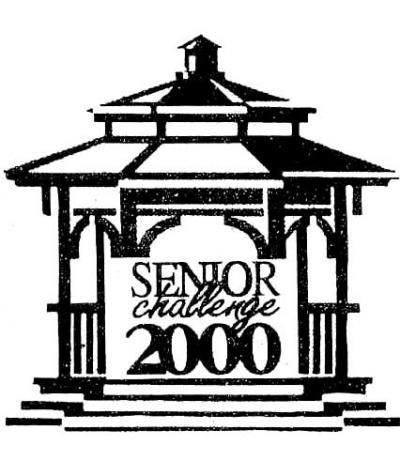
The Senior Class Council of the Class of 2001 seemed inspired to reach higher goals. At least initially they thought about the $40,000 level, even though classes from the previous few years had reached only half of that sum. They focused on three options for the class gift:
- A contribution to the Millennium Garden
- Funding for the Union renovation
- Better signs along Hudson Road and University Avenue
They chose the contribution to the Millennium Garden, though the name of that garden seemed to shifting to a memorial garden, possible in memory of Vice President for Educational and Student Services Sue Follon. The Class of 2002 decided to donate a bench and an arbor to the garden project. They raised $4730 to contribute to the Memorial Garden.
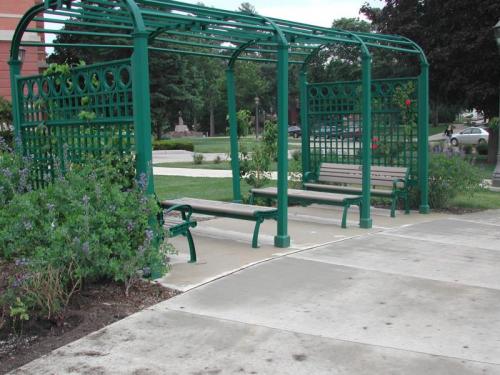
The Class of 2003 decided to donate funds for a scorer's table in the new McLeod Center, then under construction. The initial goal was $20,000, though later reports indicate that it was $10,000. Seniors who contributed at least $100 would be eligible for the raffle of a $500 travel voucher. Assistant Director of Annual Giving Ali Schissel provided the Development Office pitch:
Tuition covers less than 40 per cent of what it costs to educate a UNI student, so our education was assisted by alumni. Let's return the favor and invest in today's students.
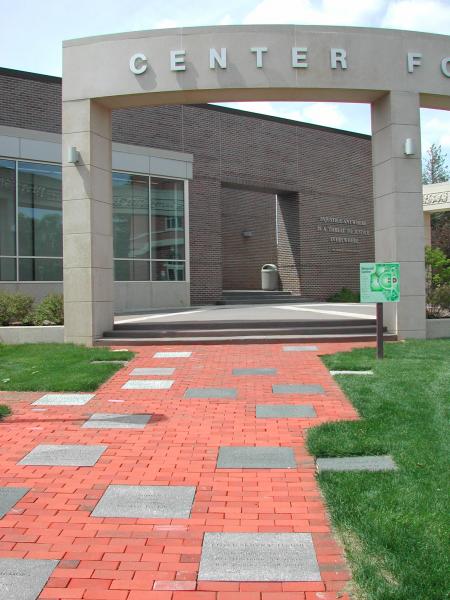
The Class of 2004 went back to the garden project as the recipient of its gift. Four of the five classes, going back to 2000, had made that choice. The Class of 2004 considered both a rose garden and a stage within the Memorial Garden. The Class of 2005 continued the trend. It made its class gift to the Memorial Garden in the form of a small stage.
The Class of 2006 continued the furnishing of the Memorial Garden. They decided to support the purchase of a bronze, life-sized model of a panther, which would be mounted above a circular pool in the garden. The pool itself was the result of the gift of the Class of 1993, whose original choice of a new pond proved impractical. The casting would be made from a design by Duke Oursler, a UNI senior.
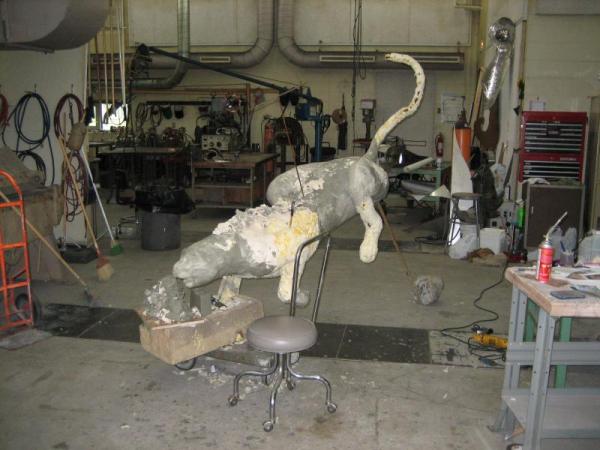
It would be dedicated to President Robert Koob, who retired in 2006. Mr. Oursler was happy, excited, and humble at the selection. He said:
This is the first time that I've made something that is going to last longer than I am . . . It's a really weird feeling.
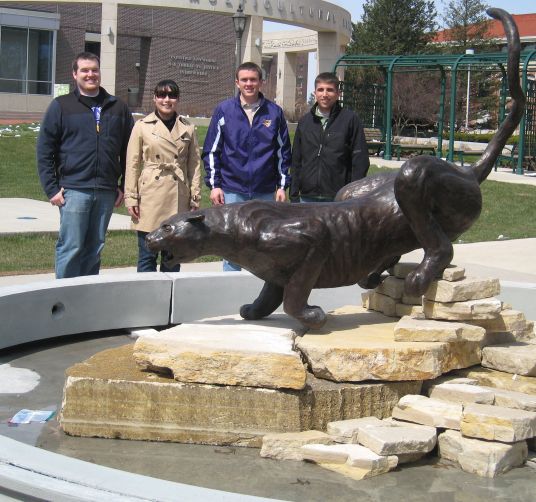
In 2007, the class gift committee decided to take a look at its whole fund-raising process. They asked Professor Gayle Pohl's class to research student attitudes toward philanthropy in general and, specifically, what they knew about charitable gifts relating to campus. As a result of this research and some careful thinking, the gift committee decided that the Senior Challenge should become the Student Challenge. This program would include students at all levels, and not just the senior class. Director of Annual Giving Vicki Collum said:
They felt that a broader attempt to educate and engage students in philanthropy was needed and wished to reach out to freshmen through seniors.
This was, perhaps, a change that recognized the difficulty of getting a representative group of seniors interested, committed, and organized for a specific class gift. The change may also have been designed with the intention of making fundraising an ongoing effort, involving students of all classes, rather than a short burst of activity on the part of a small group of seniors. Because the committee was busy with study and planning, there was no class or student gift in 2007.
In both 2008 and 2009, the Student Challenge directed its gifts toward scholarships. The group hoped to award the first scholarships in the fall of 2009 and the spring of 2010. In 2009 the student gift committee used a marketing campaign that it called Pawprint. Students were encouraged to "leave their pawprint" on UNI by making contributions that would improve the lives of future students. Vicki Collum stated that the Student Challenge effort did not raise a lot of money, but that it did raise awareness of the value of philanthropy.
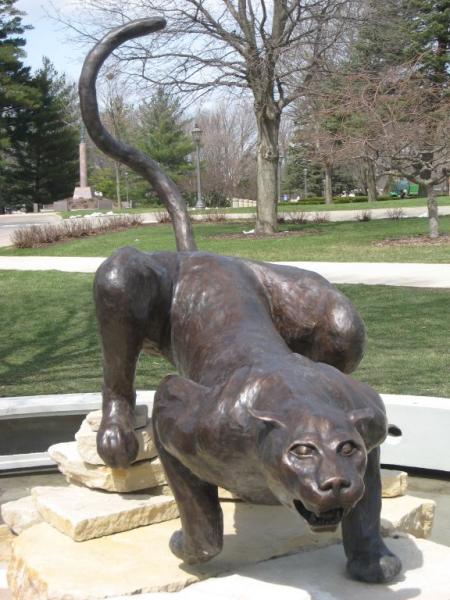
Summary
Class gifts have moved in cycles over the history of the University of Northern Iowa. Early classes were small, and their resources were limited. What is more, few students of those days persisted to achieve a four, or even a three year degree. Most students attended the Normal School for a term or two and then went out to teach. There was simply not a large corps of students who stayed long enough to develop strong loyalties to their alma mater. Still, several early classes, notably the Classes of 1881 and 1898 did leave memorials to themselves on campus. The first strong wave of class gifts began around 1909, coincidental with the change of the school's name from the Iowa State Normal School to the Iowa State Teachers College. Except for the World War I years, most of the classes from 1909 through the end of the 1920s made some sort of gift to the school. These classes tended to support significant architectural monuments such as the College Street gateways and the Campanile.
The Depression and World War II brought class gifts to a halt. Students had little money and little time. What is more, they were probably concerned with more important things. The tradition did not revive until the early 1960s, again coincident with a school name change from the Iowa State Teachers College to the State College of Iowa in 1961. With the assistance of the staff of the new Foundation, seniors chose to support a number of different projects in the middle 1960s. Then, for quite a few years, the seniors decided to support projects associated with the UNI-Dome and the Strayer-Wood Theater.
Through the early 1980s, class gift efforts tended to be small affairs, with little money raised. Collecting even $3000 was a significant achievement. But things changed in 1986, when Dee Vandeventer became responsible for advising senior classes on their gifts. Under her guidance, seniors organized attractive programs of activities culminating in effective fundraising campaigns. Within four years, seniors were raising over $60,000 per class. They funded big projects such as assisting with the computerization of the Library card catalogue, building a new gateway entrance, and helping with the renovation of the Campanile.
Fundraising hit a plateau and then began to drop off in the middle 1990s. Still, classes provided significant contributions for scholarships, landscaping, and parking facilities. Sharp declines in the amount of money raised continued after 2000. Raising as much as $20,000 has been a strong performance in recent years. In the first few years after 2000, most of the classes devoted their gifts to funding particular features in the Memorial Garden located east of the Maucker Union.
In 2007 the longstanding Senior Challenge program became the Student Challenge, a more wide-ranging fundraising effort to include and educate all students--not just seniors--on the value of giving back to the university. Scholarships have been the results of Student Challenge fundraising in the last several years, perhaps reflecting the effects of higher tuition and difficult economic conditions.
And so, right now, the old idea of a class gift--that is, a gift to the university from one particular graduating class--is dormant. It has been replaced by a student gift, representative of all of the students of the university in one particular year. It is too soon to know if this new idea will completely and permanently replace the old notion. Only time will tell. However, whether or not the old idea of a class gift ever revives, the campus will always retain at least a few reminders of the way that earlier graduating classes felt about their alma mater.

Compiled by University Archivist Gerald L. Peterson; assistance in photo selection by Student Assistants Amy Yates and Nick Arnold; advice from UNI Director of Annual Giving Vicki Collum; some images furnished by UNI Foundation; scanning by Library Assistant David Glime; October, November, December 2009; photos updated and citations added by Graduate Assistant Eileen Gavin, February 25, 2025.
